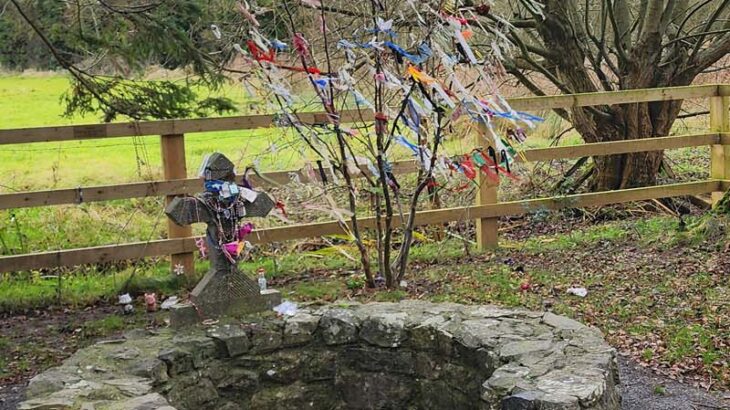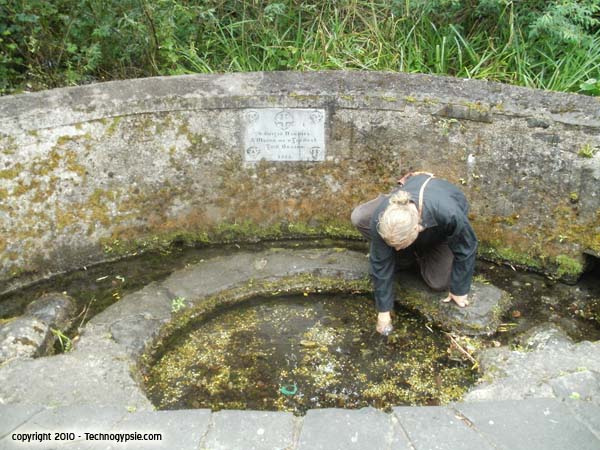
Brighid’s Holy Wells in Kildare
* Kildare, Ireland
The Goddess or St. Brigid has two holy wells in Kildare? She certainly does. Some say that one of the wells belongs to the Ancient Goddess Brigid while the other well belongs to St. Brigid. Both are sacred, both are holy, and both hold Brigid’s magical healing waters.
Well #1 is the ancient “original” sacred well of Brigid. Well #2 is the dressed-up sacred shrine and park of Brigid with her well. They were two distinctly different entities … an Ancient Goddess whose ethereal Godly presence could manifest as a human female and the actual magical human nun turned Saint who was the personification of the Deity. One and the same? could be. Two differently distinct entities who share the common thread? very possibly.
Two wells … that seems to be the case. One for the Goddess and One for the Saint? I would say “both” wells contain “both” the Saint and the Goddess in them. I’ve come to notice a pattern with this, that the “ancient” Pagan “original” well is often offset from the “Christian” one. This seemed to be the case when I went to see the Madron well in Cornwall, England (though technically that one had “three” – the original one buried in the marsh, the Pagan “original” one offset from the one underwater, and the Christian well house.).
There are many Brigid wells in Ireland as well as Britain. As wells were the sacred sites of veneration in the Druidic faith, many also have an associated sacred tree with them that is covered with votive offerings. These are often called “Wishing Trees”. Trees covered with “clotties” or ribbons of cloth are done as a prayer for healing or a spell to obtain something. Pilgrims come here to get in touch with the well inside themselves. Wells are sacred places where people for thousands of years have come to pray, worship, and reflect.
Pagan and Holy wells are often seen as the entrance to the womb of Mother Earth, the source of life. Each holy well is always related to healing, and each well usually has a specialty that it performs. Brigid’s wells are pretty powerful for healing sore eyes. Brigid is associated with all healing. Her girdle is capable of curing all disease and illness, and this well is rumored to make “the blind man seeing, the dumb girl speaking, etc.”
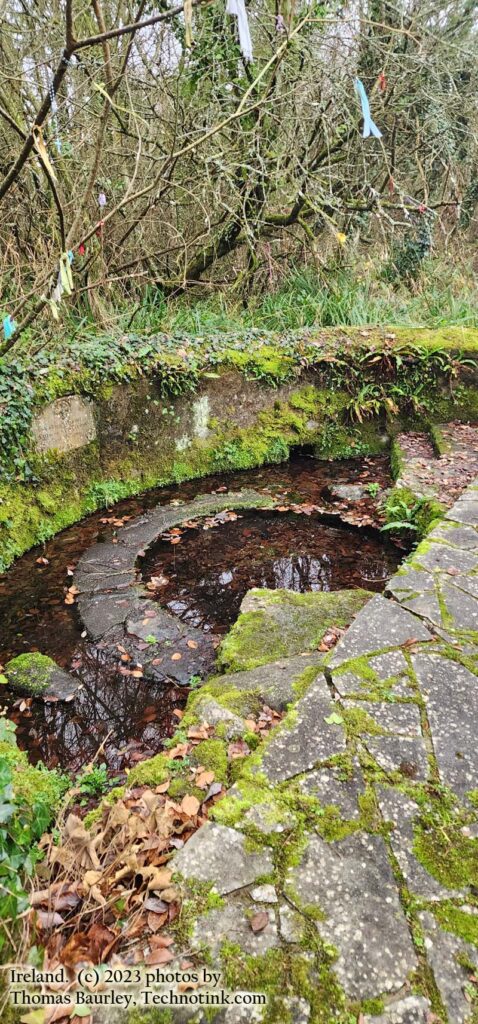
Brighid’s Holy Well #1 a.k.a. “The Wayside Well”
The first well is the ancient Pagan sacred well of the Goddess Brigid. It is located just next to the car park of the Japanese Gardens. This well/spring itself feeds and nourishes the Gardens themselves. This is the spring source whose waters run off and feed the newer well. It’s not really decorated and is simple, rustic, ancient, and silent. Seemingly forgotten. It has only an inscription sign in Irish that translates as “St. Brigid, Mary of the Gael, pray for us.” However, it is still a major focal point for pilgrimages and ceremonies.
The Brigid Eve ceremonies (January 31st) start at a small fire set up just outside the Japanese Gardens car park with a chanting to the Goddess Brigid which is followed by a candlelit journey of contemplation about the Goddess and the Saint and the spirit that weaves them together. The candlelit journey goes to this well and ends at the second well. It is customary to gather this well water in a bottle because of its strong healing properties and in exchange to leave an offering for the spirits and faeries who dwell there.
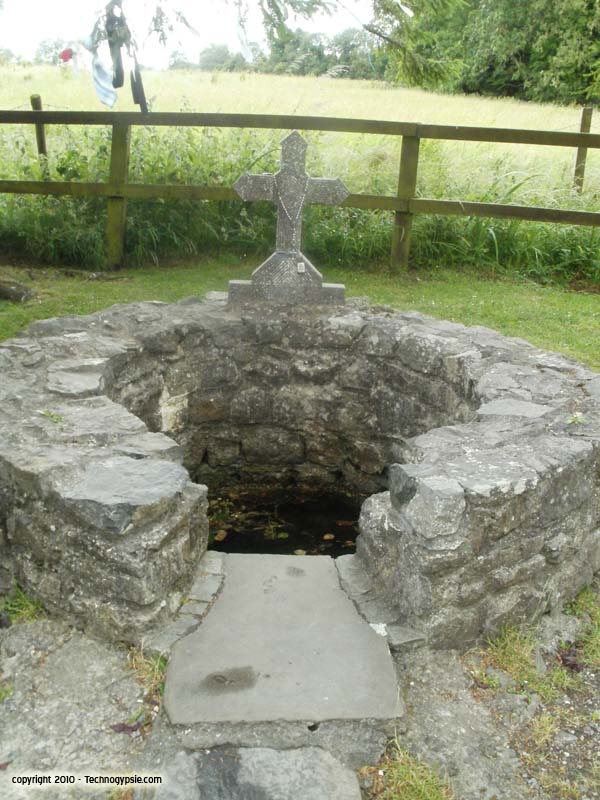
Brighid’s Holy Well #2 a.k.a. “Tobair Bride” (St. Brigid’s Well)
The second well is the “supposed” Christian well of St. Brigid. It’s the tourist one. It’s the “Official” one. This is the one in the tourist guides, signposts, and advertisements. It is located in a landscaped grotto at the end of a short lane close to Well #1. The local Catholic clergy moved Christian devotion and practices to this site in the 1950s supposedly out of concern for people’s safety in accessing the original well which was at the bend in a narrow busy road. It is here that the Roman Catholic healing well is located. While pilgrims often visit both wells, this is the well where an involved ceremony, similar to the “stations of the cross” is conducted. Pilgrims reflect on the Goddess and/or Saint Brigid and how they weave together.
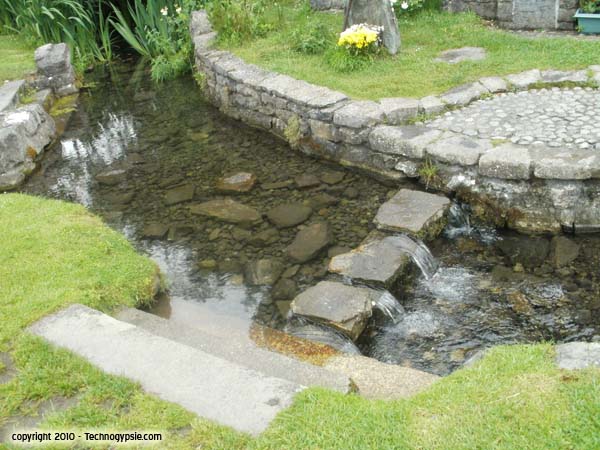
They reflect on themselves and the wellsprings that flow within them. They come to the water’s edge to get in touch with their inner lives and listen to the sound of the water, blessing themselves with the water, and sending out water to the different places where healing is needed. They contemplate what they are thirsting for today. They spend quiet time here.
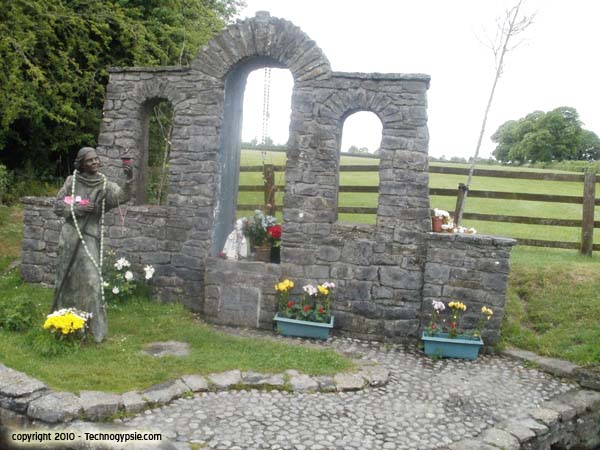
A statue of Brigid greets pilgrims when they enter the sanctuary and grotto.
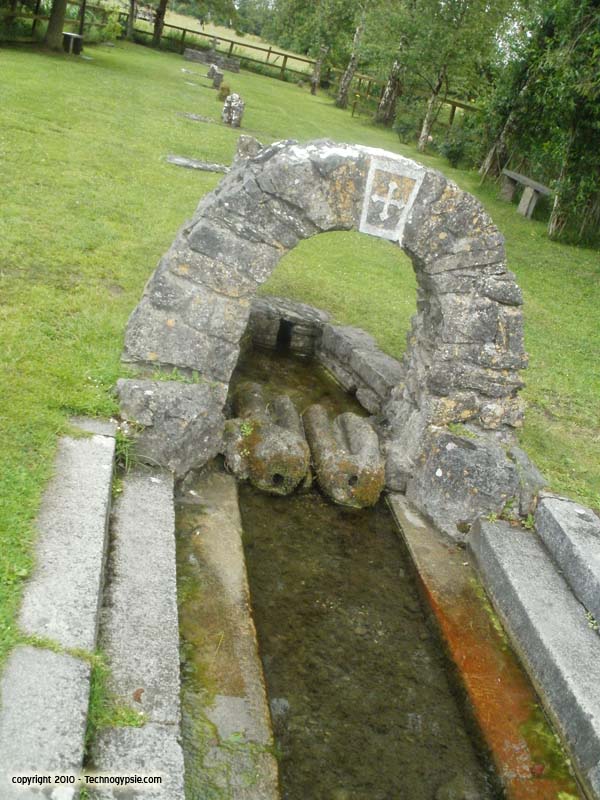
This is followed by a small arch over a pair of stone shoes called “Brigid’s shoes”. The water flows through both shoes creating two streams. Some say these are her “Breasts” out of which the milk is flowing as the milk flows from a mother’s breasts.
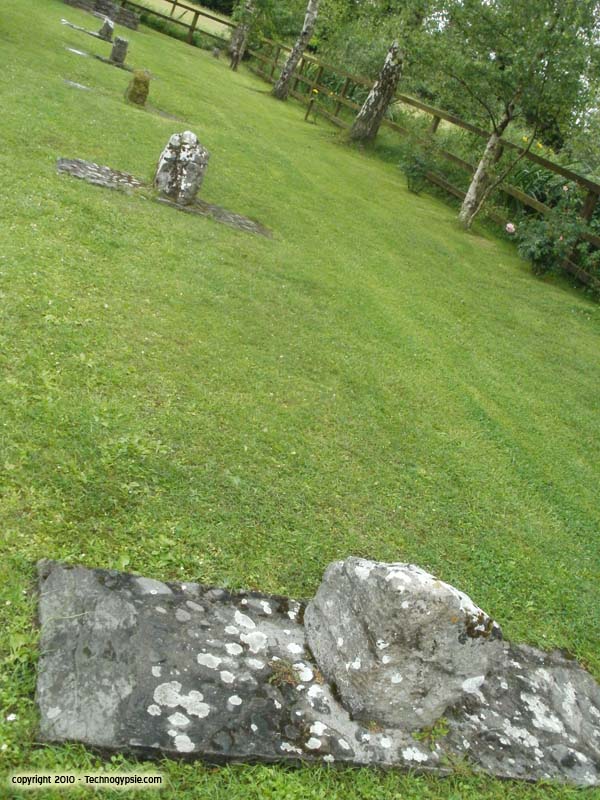
The following the stream to the well are the prayer stones. There are five prayer stones standing in line, and the rite is to stop at each stone in turn and dwell on an aspect or quality of Brigid. Then say a prayer in between each one.
Stone #1: “A Naomh Bríd Gui Orainn” which means “St. Brigid pray for us.” Brigid is viewed as “the Earth Woman”. “Brigid of the land”. “Brigid of the Seasons”. “Anois teacht an Earraidh, beidh an la ag dul chun sineadh, is tar eis na Feile Bríde, ardoidh mé mo sheoil.” “Now it’s springtime, the days are getting longer and after St. Brigids Day I can hoist my sails again.”
The Earth needs to be focused on as the land is being poisoned, the rivers polluted, the ozone layer vanquished, and a dying Earth that needs to be cared for. “Touch the earth with gentleness, touch the earth with love, touch her with future, by the way, we live today, God has given us the power to create the world anew, if we touch the earth together, me and you.”
Stone #2: Reflection of Brigid as “Peacemaker”, Brigid who crossed all divides. Daughter of a wealthy Pagan Chieftain and a poor Christian bondswoman. The legend where one day a poor man came to Brigid looking for food for his family but there was no food in the house so she gave him her father’s precious sword and said: “Go and exchange it for food for your family”. She changed an instrument of death into an instrument for life. “A Naomh Bríd Gui Orainn”.
Stone #3: Brigid as “Hearth Woman”. She who keeps the fire lit. She gave a home to all. “A Naomh Bríd Gui Orainn”.
Stone #4: Brigid as “Healer”. Many come and tie a piece of cloth on the tree here asking for Brigid’s curative powers to be left on the cloth. “A Naomh Bríd Gui Orainn”.
Stone #5: Brigid as “Champion of the Poor” or Brigid as “Woman of contemplation”. There is a 32 chapter book written about St. Brigid by the monk Cogitosis. 23 of these chapters are about Brigid’s love for the poor, the sick, and the lonely. There is a legend that a friend of Brigid’s came to her with a beautiful basket of prime apples.
Brigid took the apples to the sick and poor around her to which her friend said “But Brigid, those apples are for you.” Brigid replied, “Well what’s mine is theirs.” It is a point to question within oneself … Are we sharing the “choice apples” in our lives with those living in poverty who can live with basic dignity? “A Naomh Bríd Gui Orainn”.
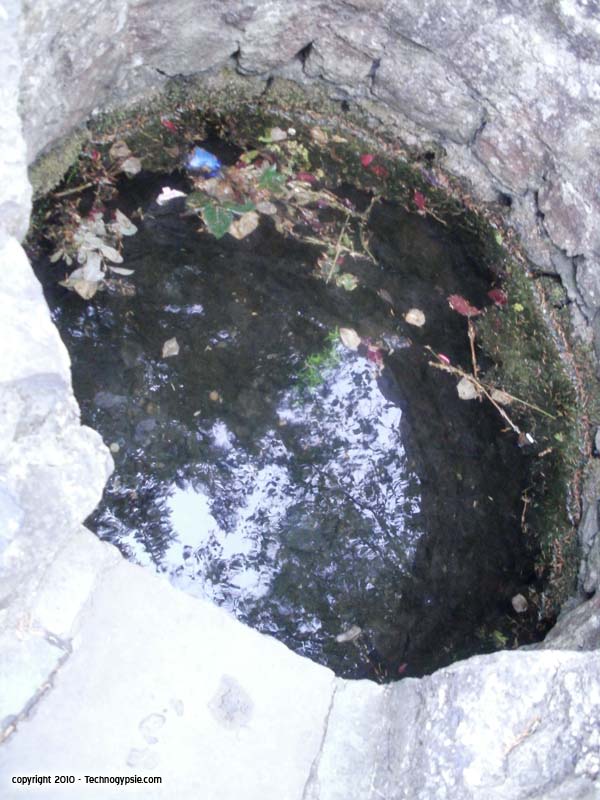
Then one approaches the well. The well is surrounded by a short round wall. This is believed to represent the wall of the womb. Then the well is circled three times “deosil” or “clockwise” to a prayer “Circle us O Lord. Keep protection near and danger afar. Circle us, keep love within our hearts, and hatred out. Circle us keeping hope within and doubt out. Circle us O Lord keep peace within and evil out.” It is custom then to leave something at the well. Circling the well clockwise symbolizes unity within ourselves, within one another, and the whole of creation. “A Naomh Bríd Gui Orainn”.
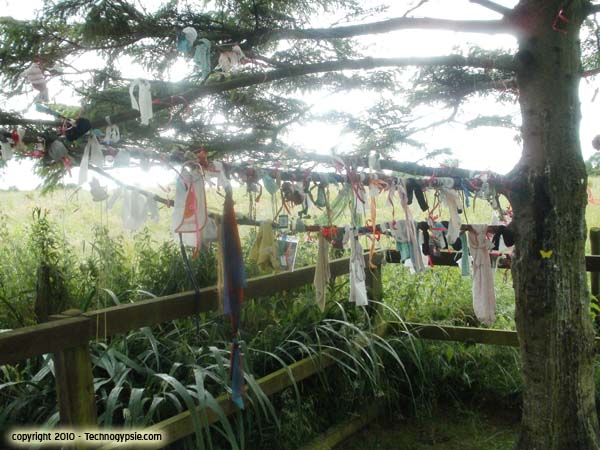
Next to the well is the “Wishing Tree”. This is where pilgrims place “clotties” or pieces of cloth with prayer petitions of healing or finding something.
Support our journey and get a postcard of the Brigid Statue here.
Photo Gallery of the Wells:
Well #1:
2023 Visit:
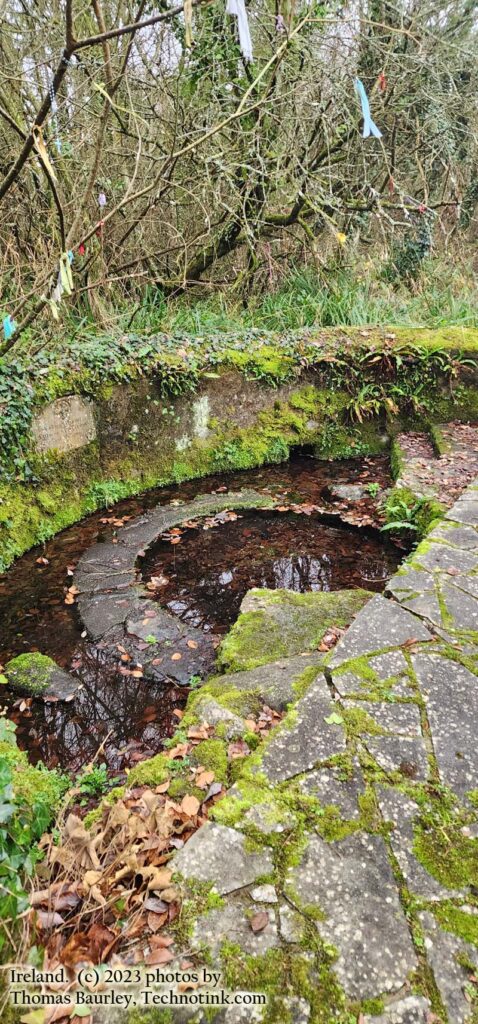
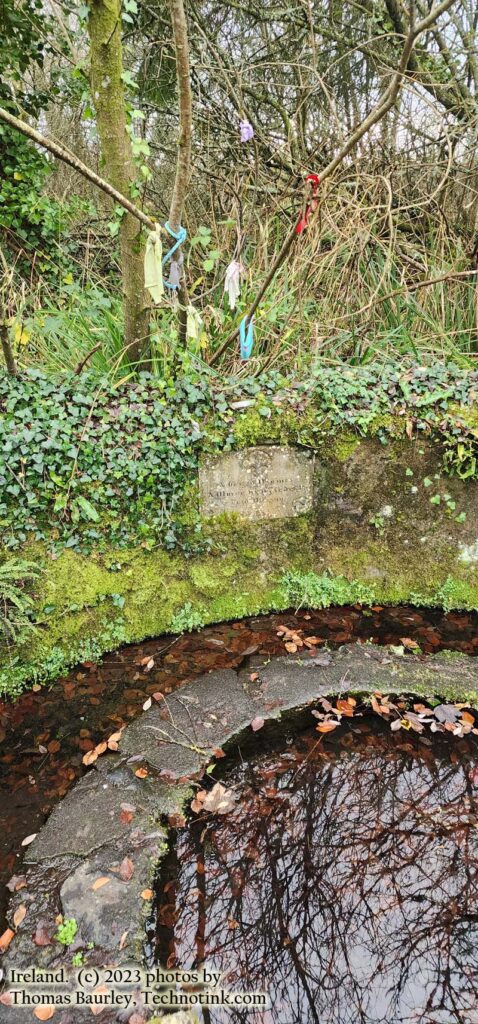
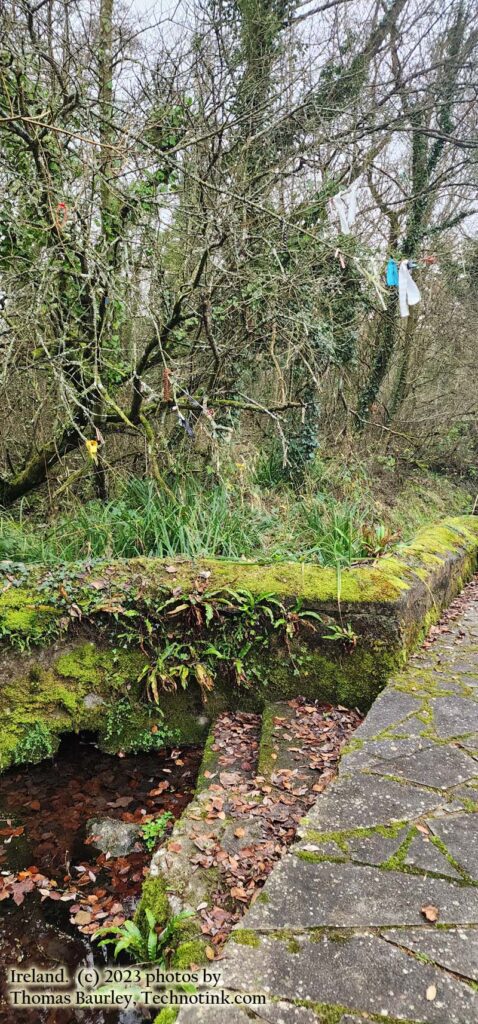
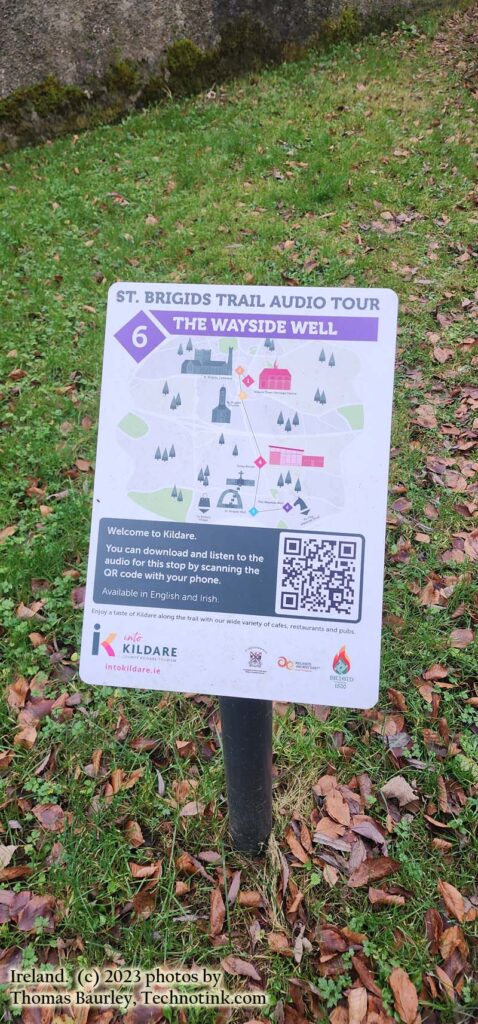
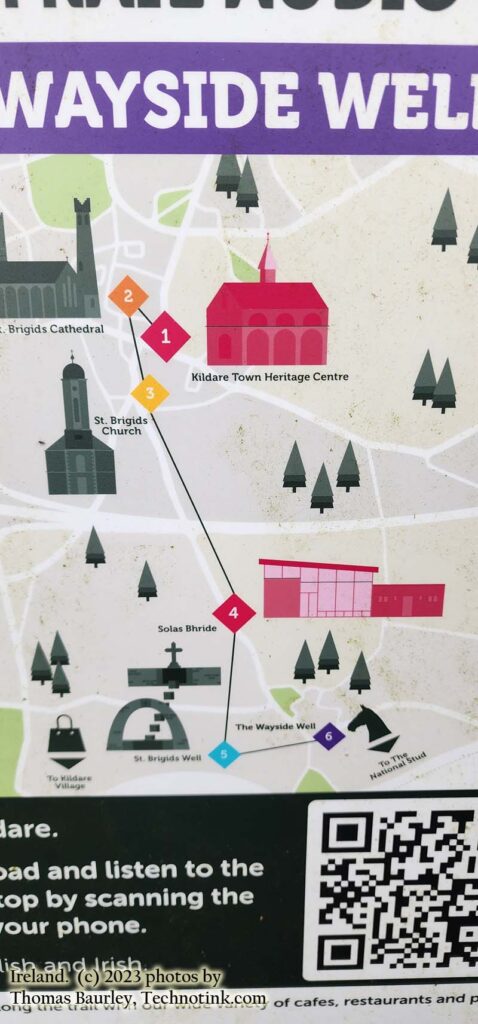
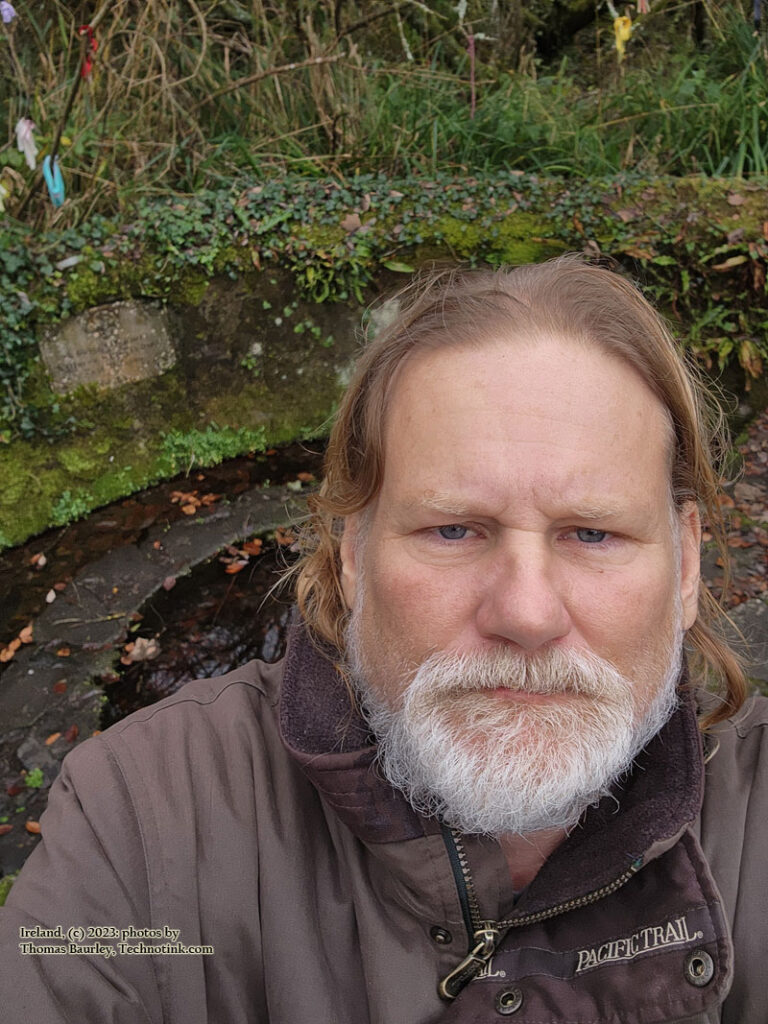
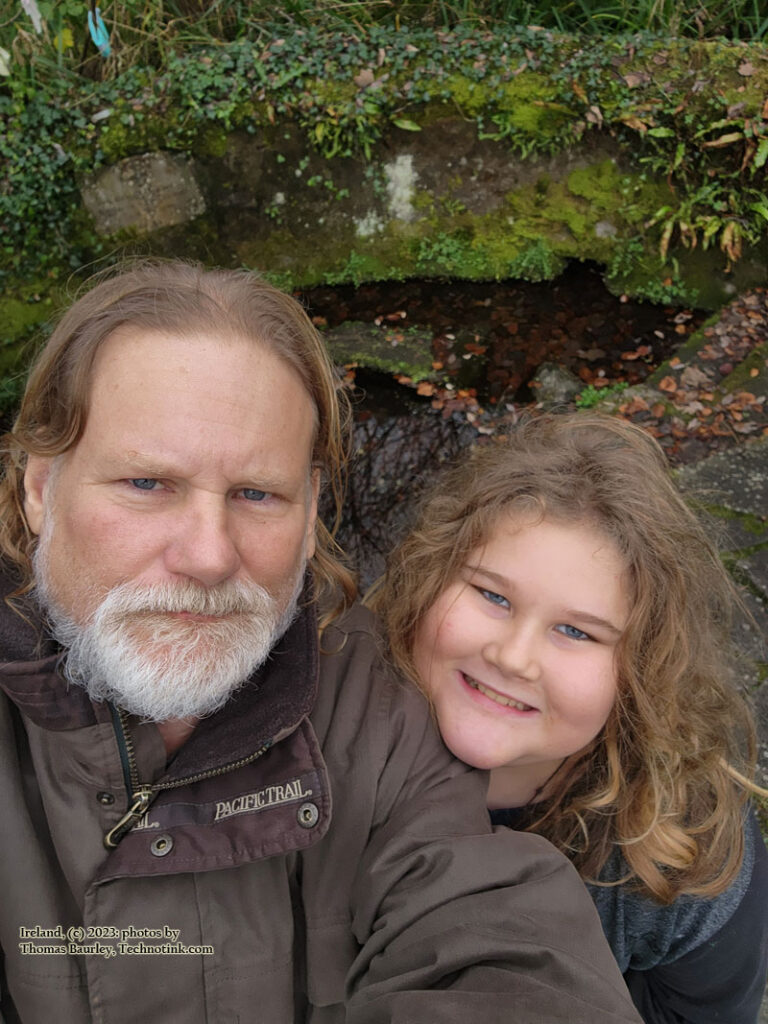
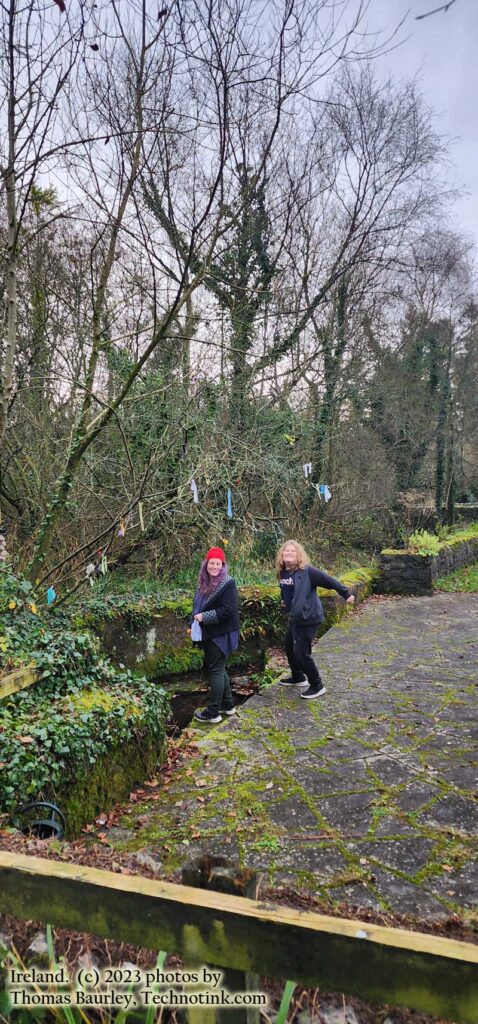
2010 Visit –
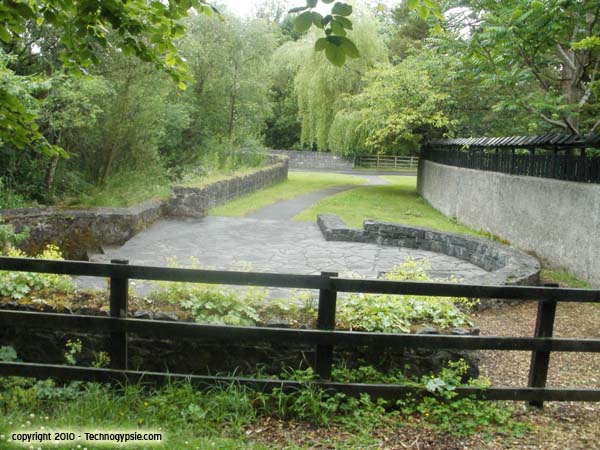
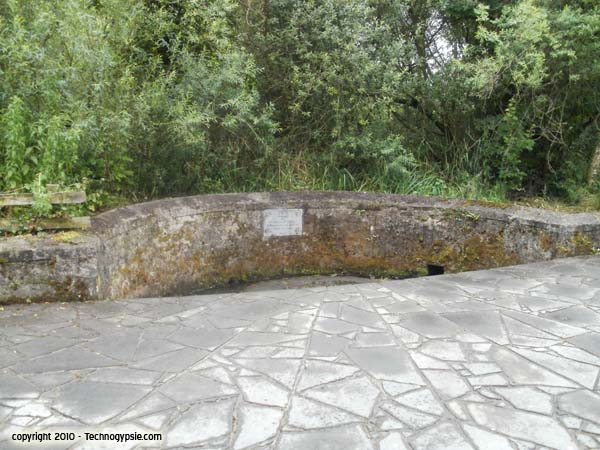
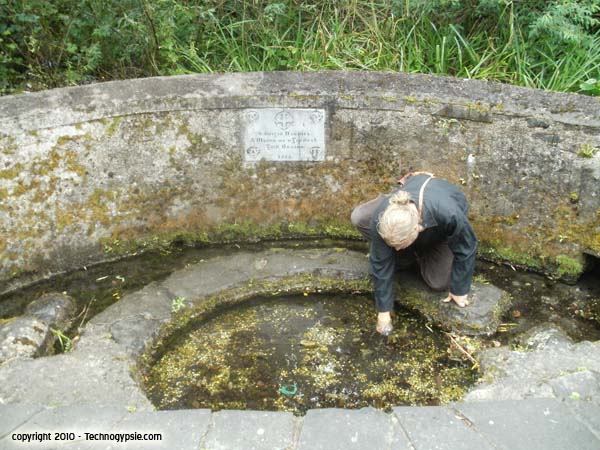
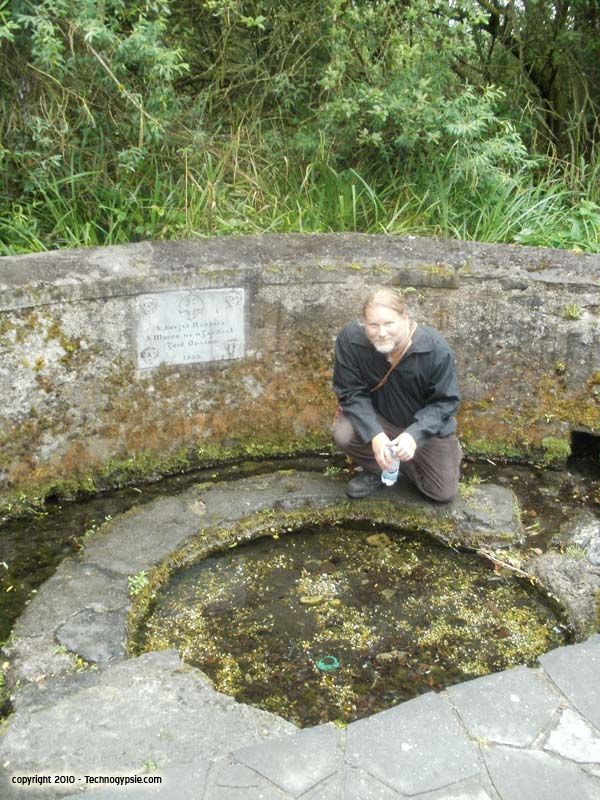
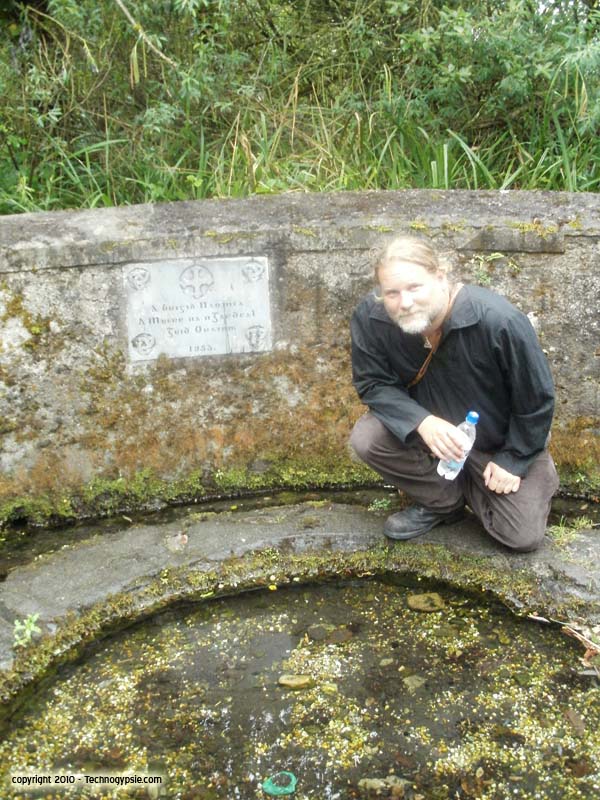
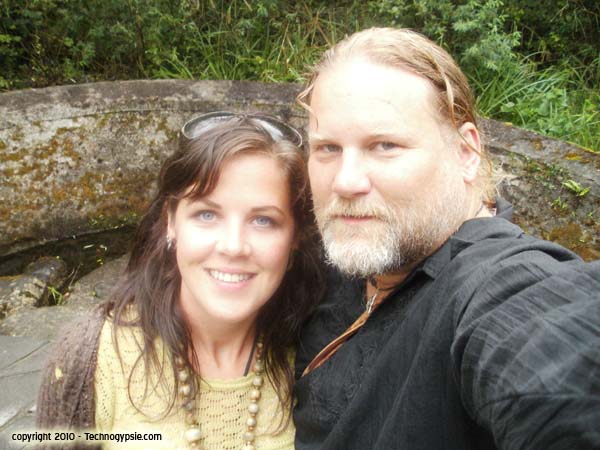
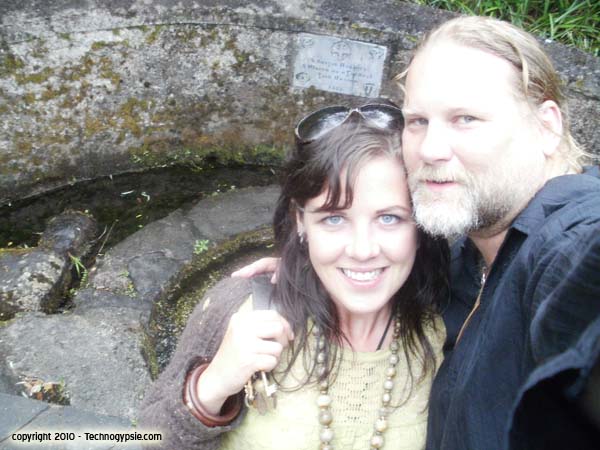
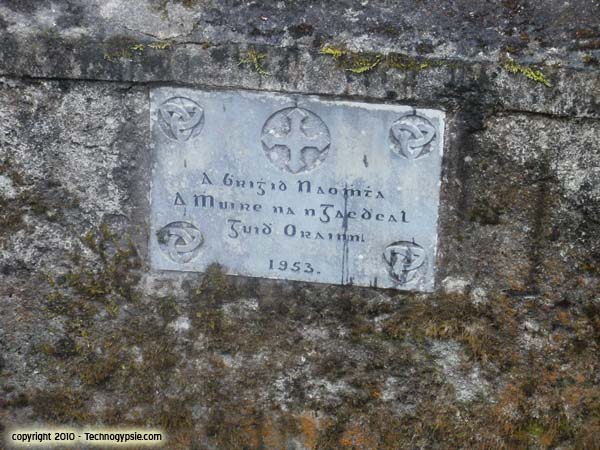
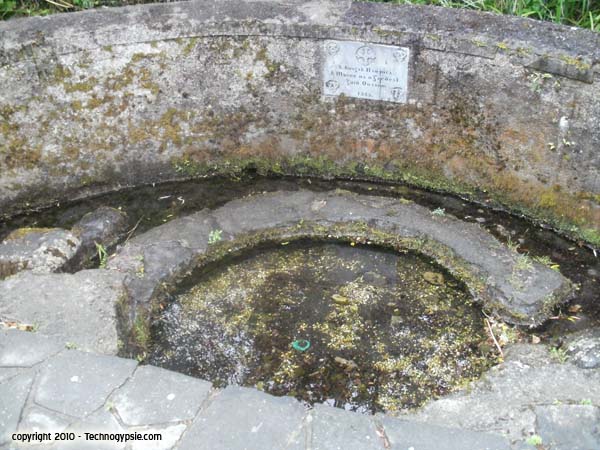
Well #2:
2023 Visit:
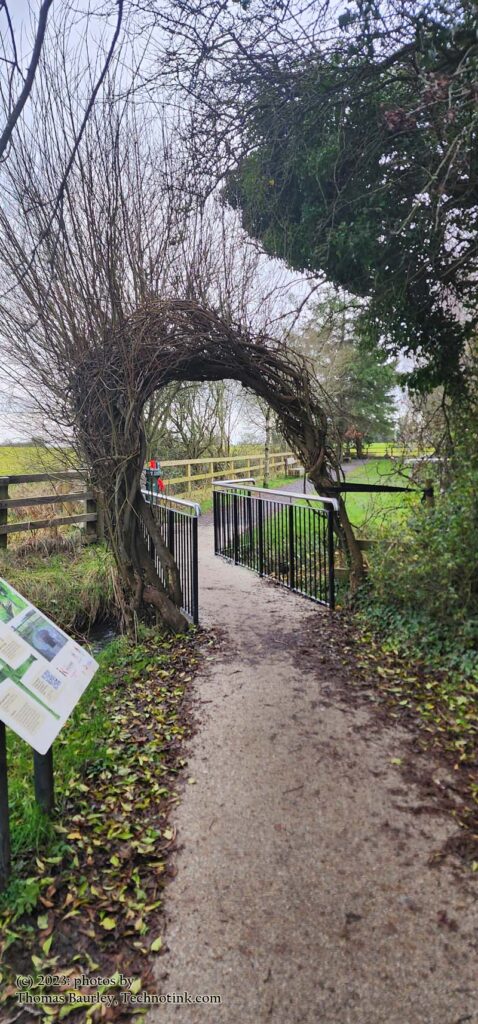
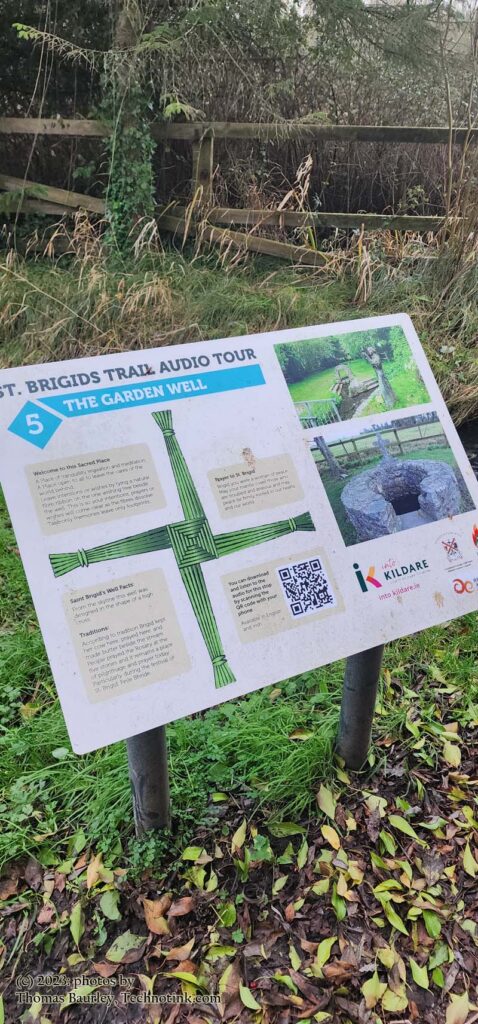
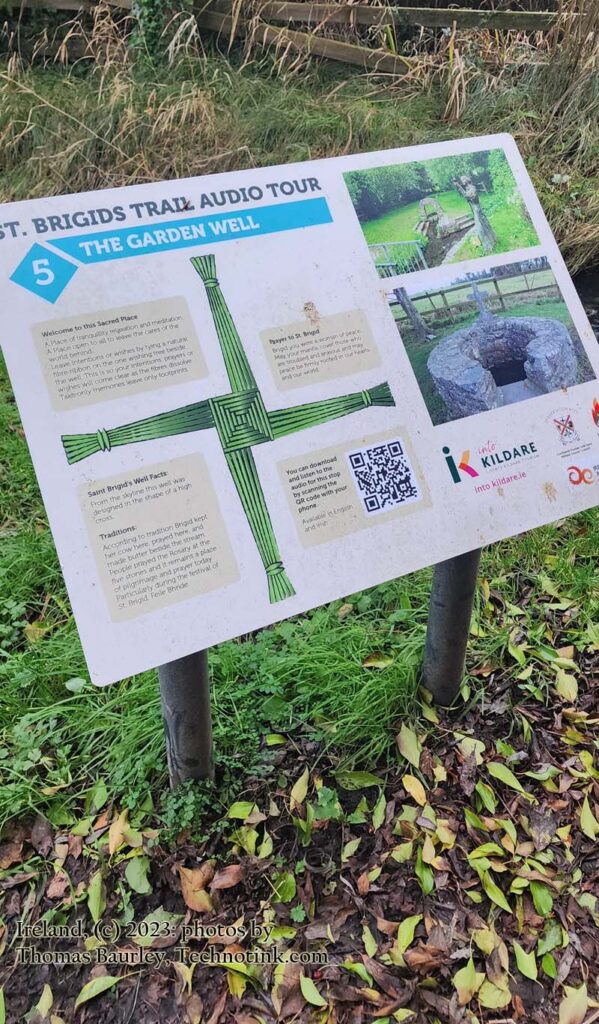
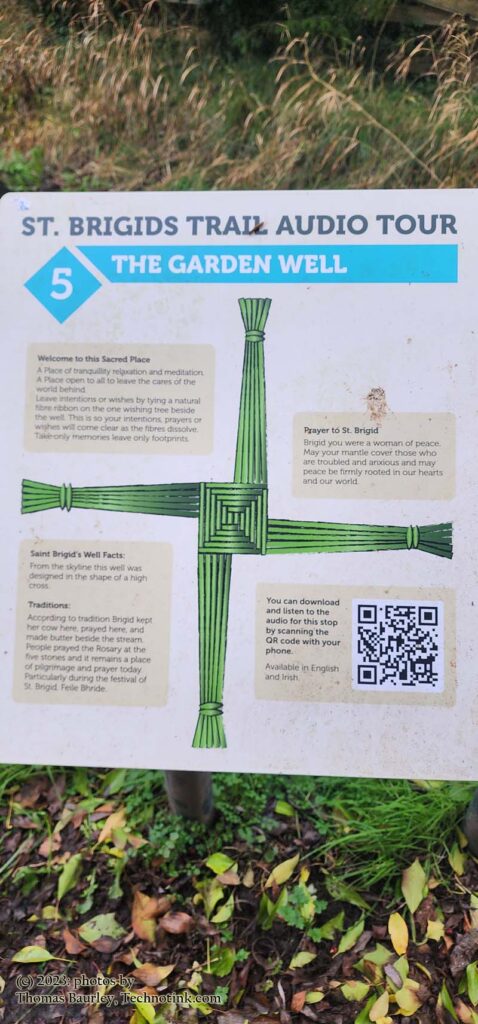
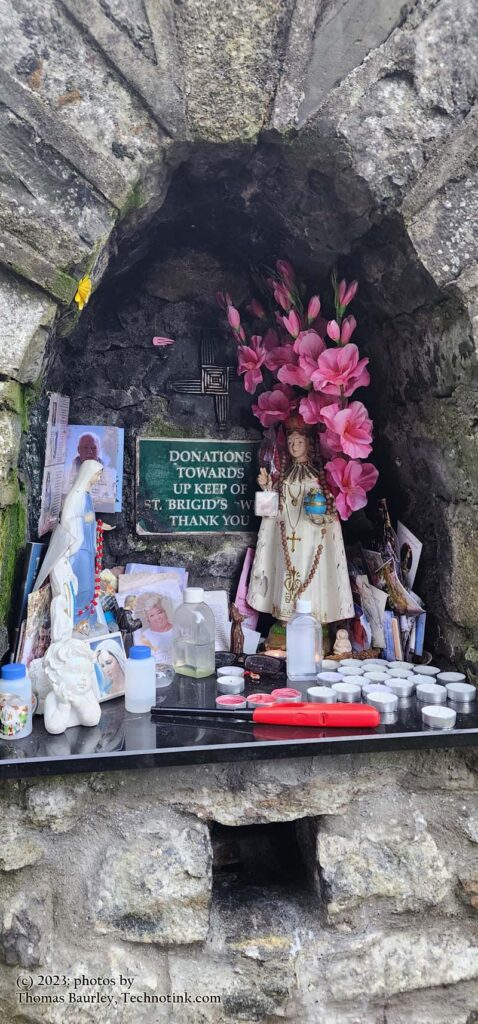
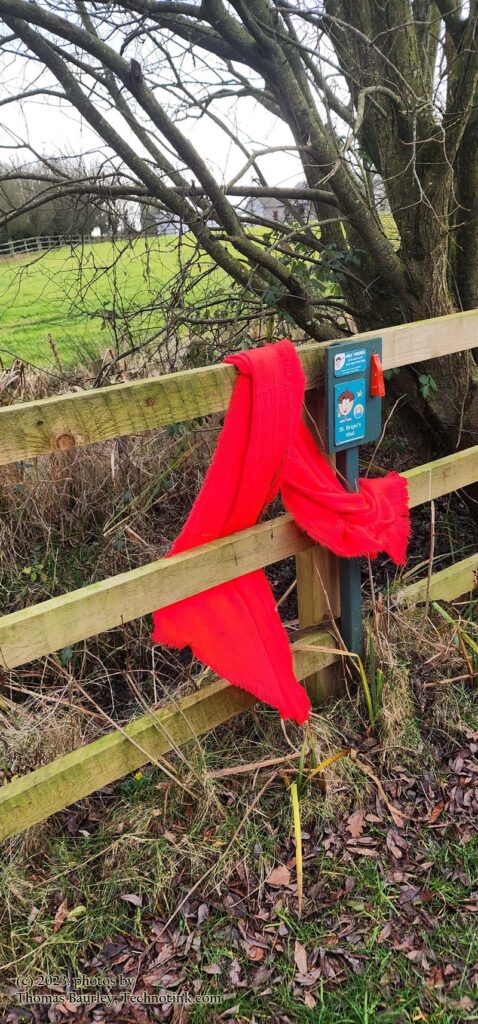
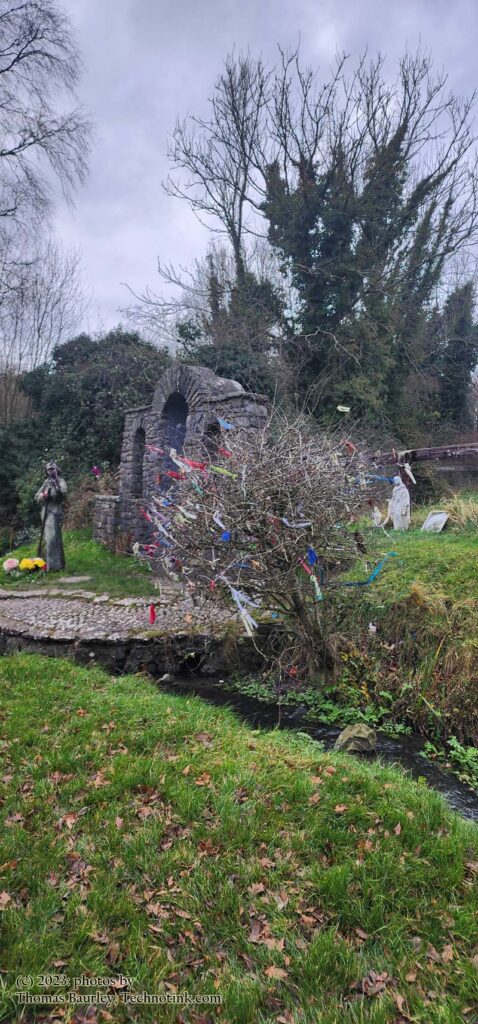
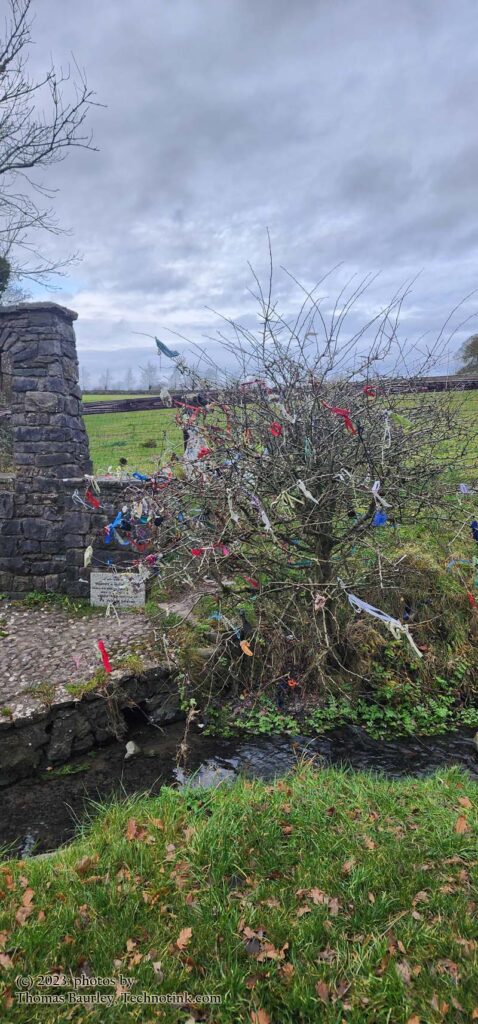
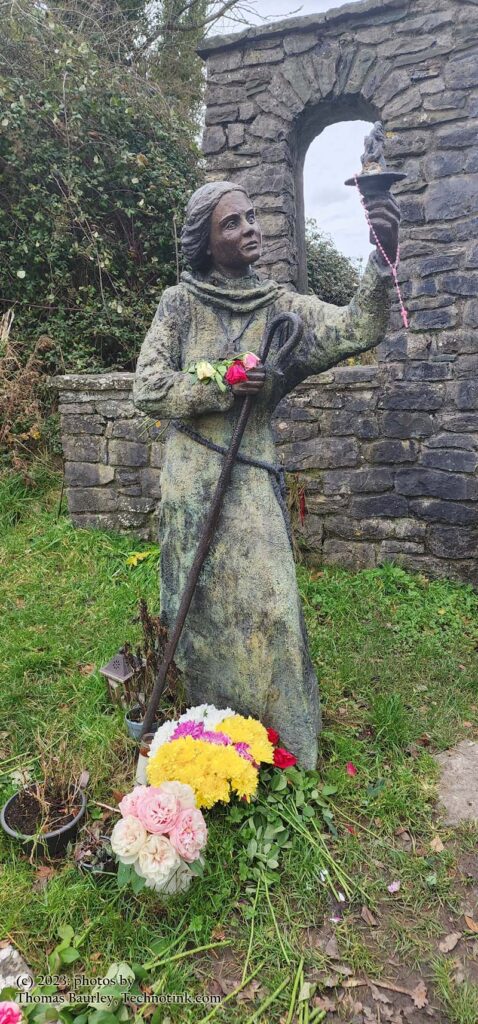
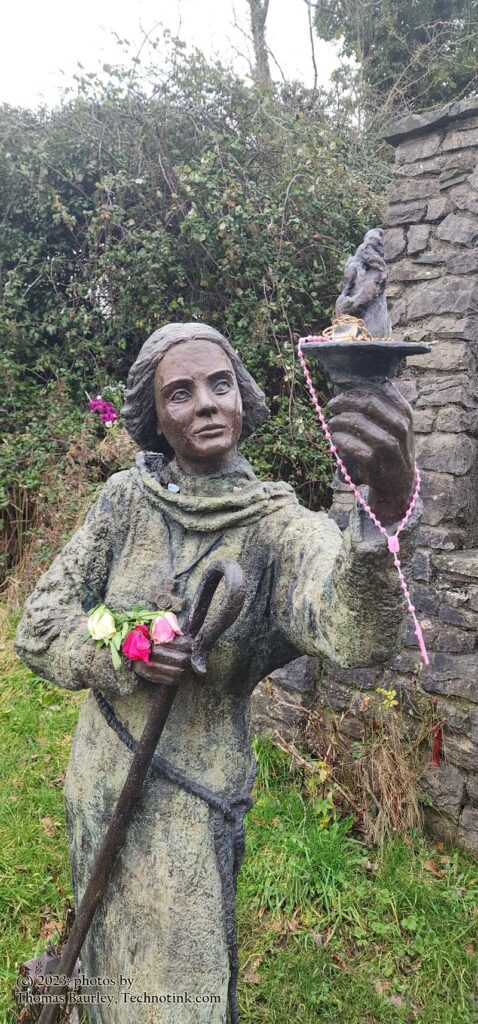
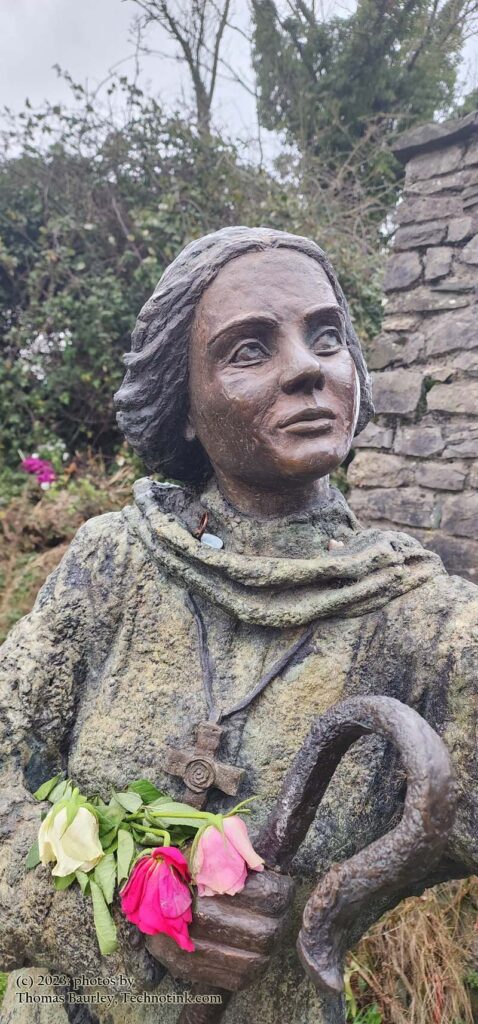
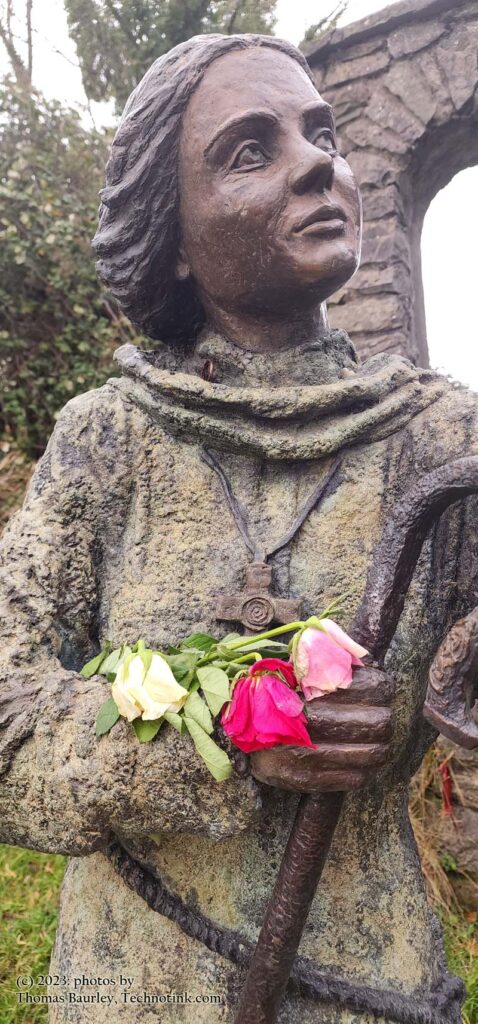
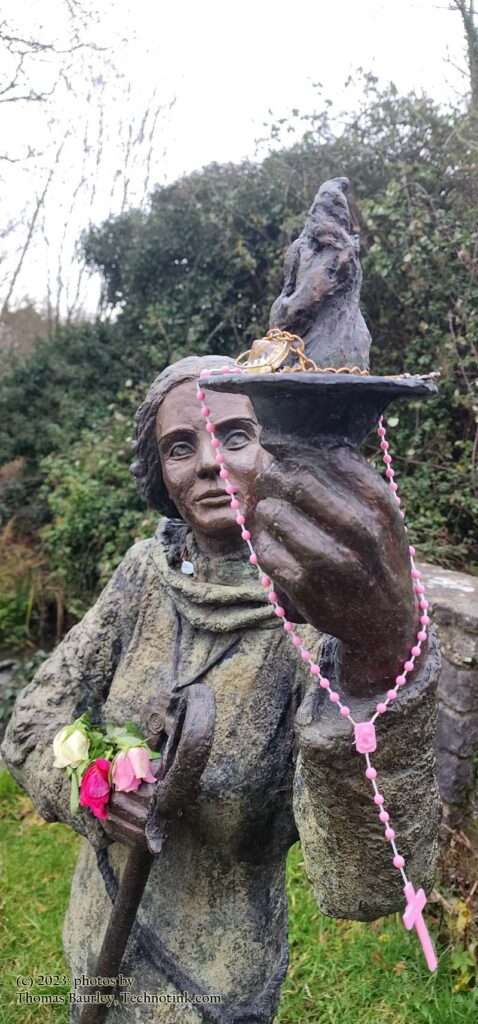
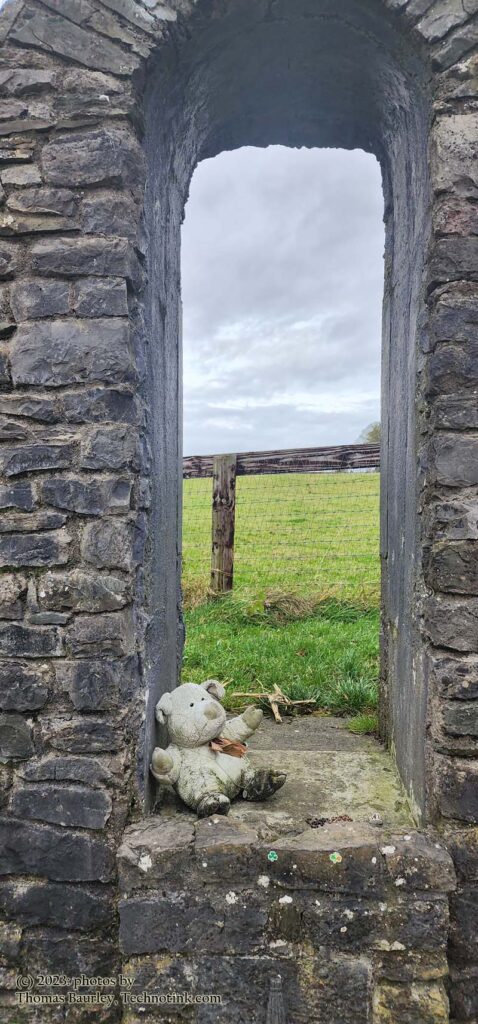
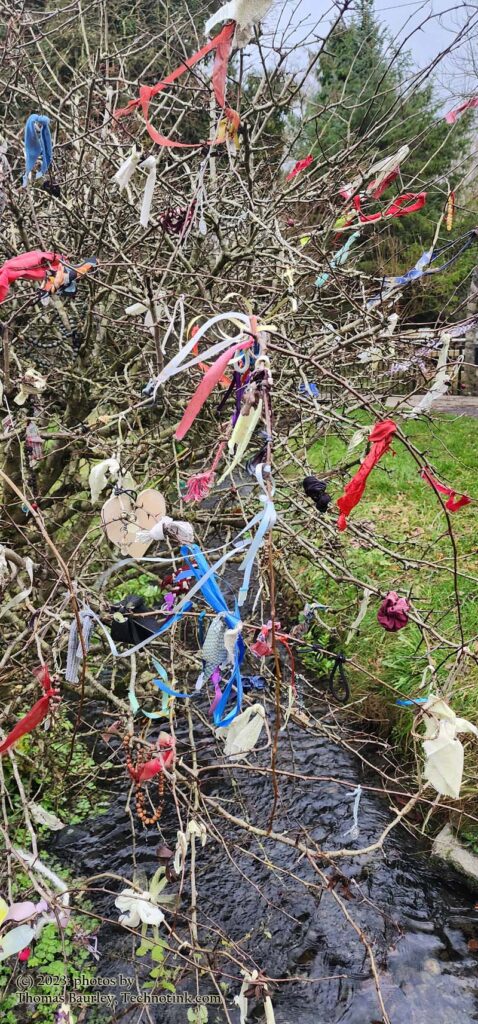
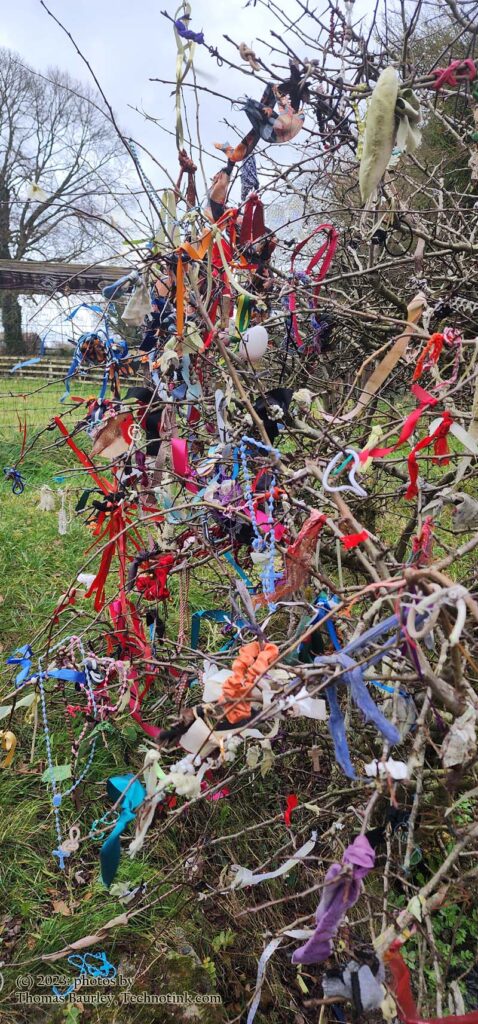
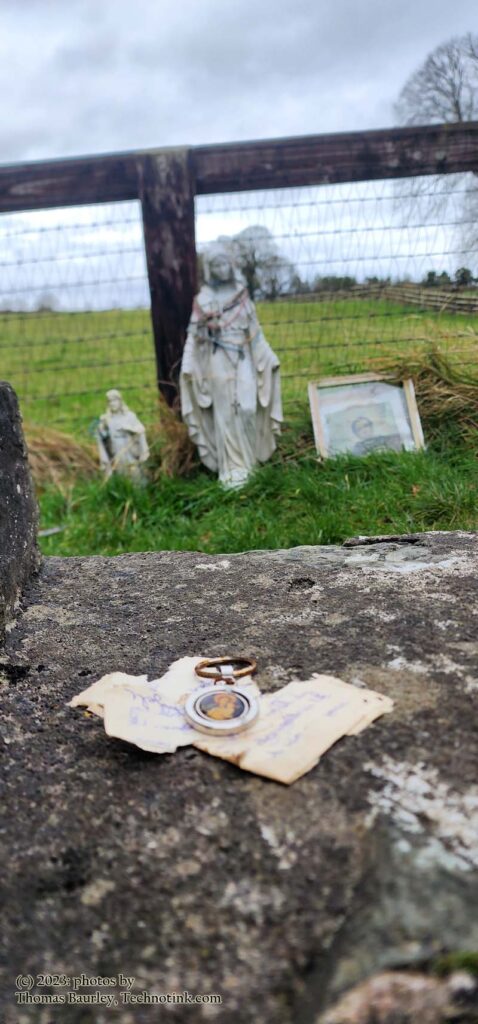
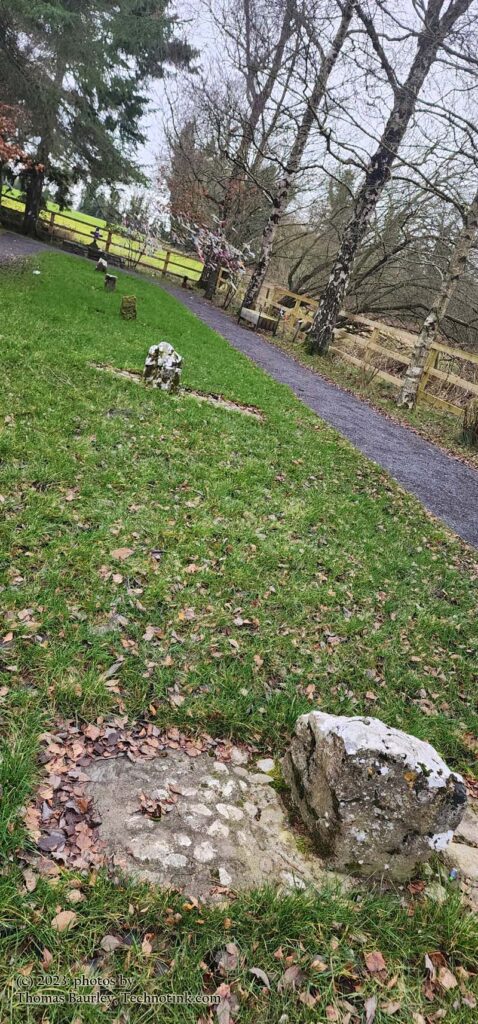
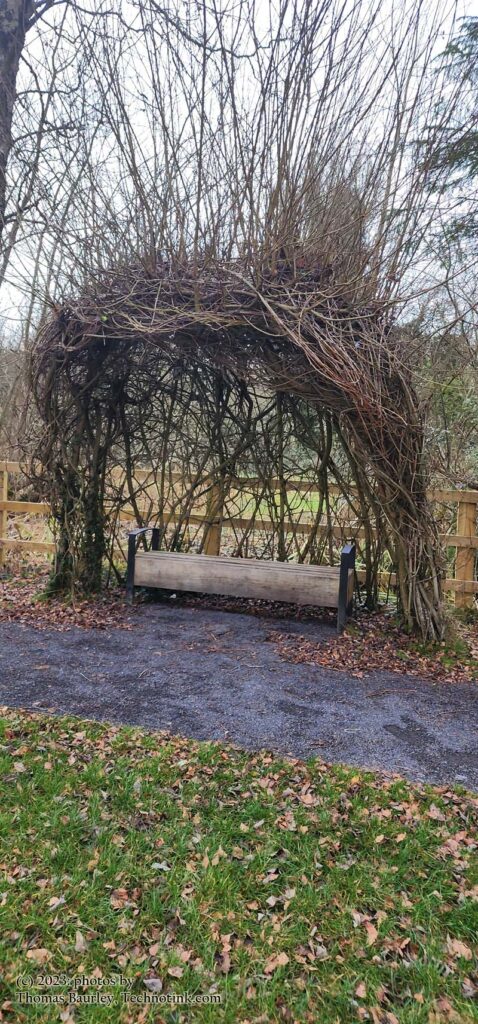
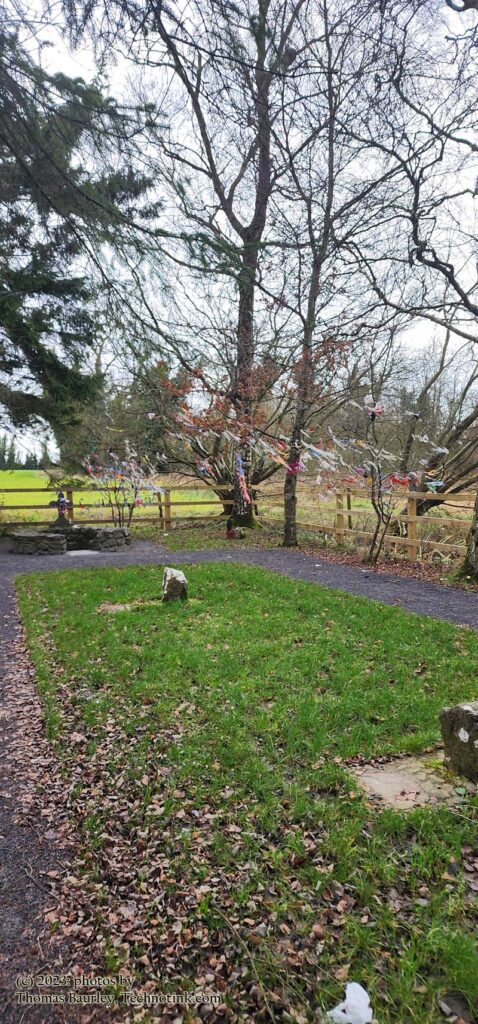
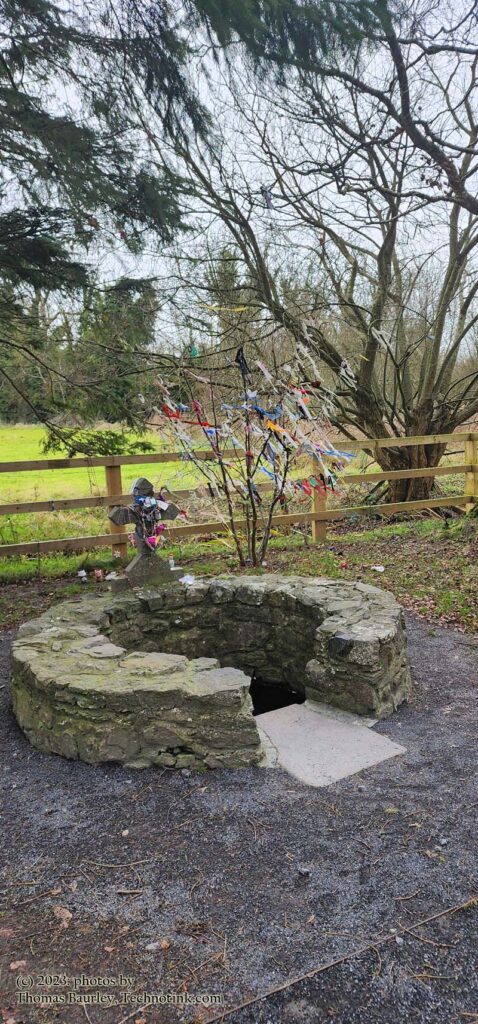
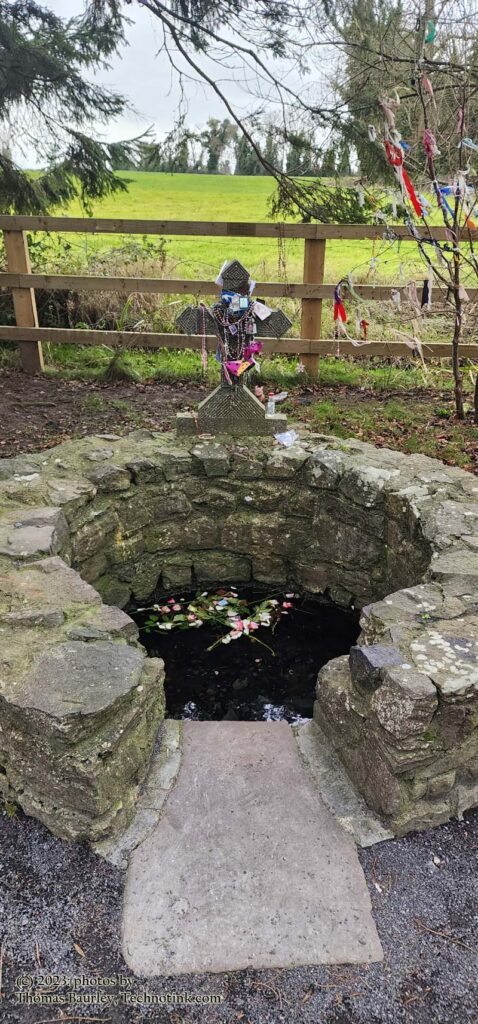
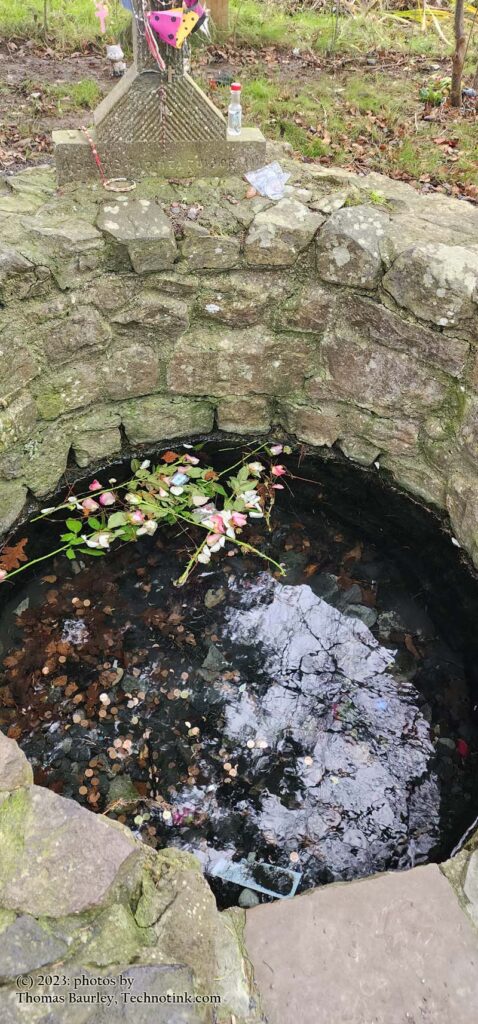
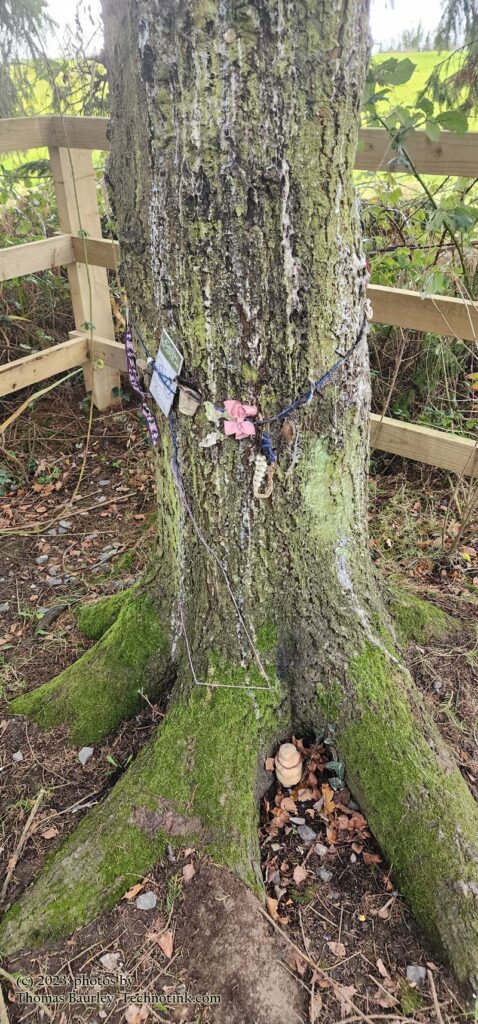
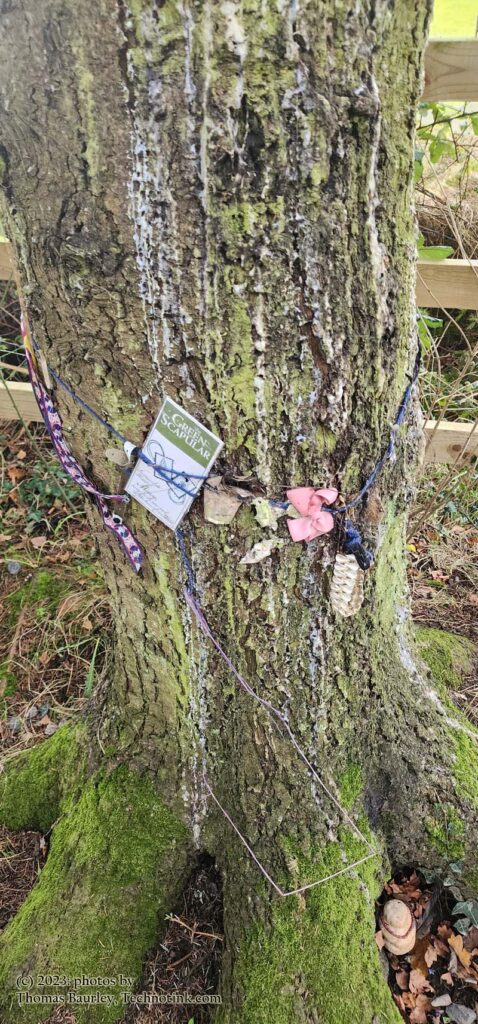
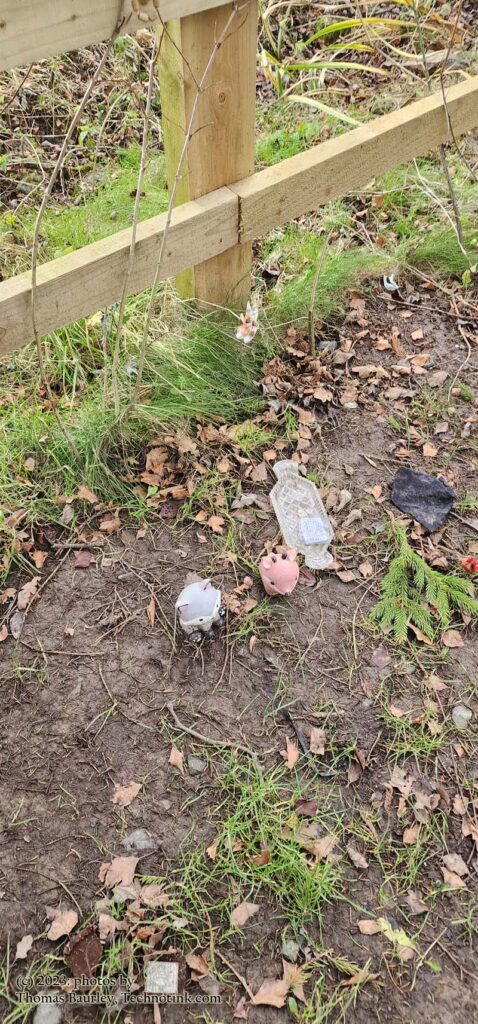
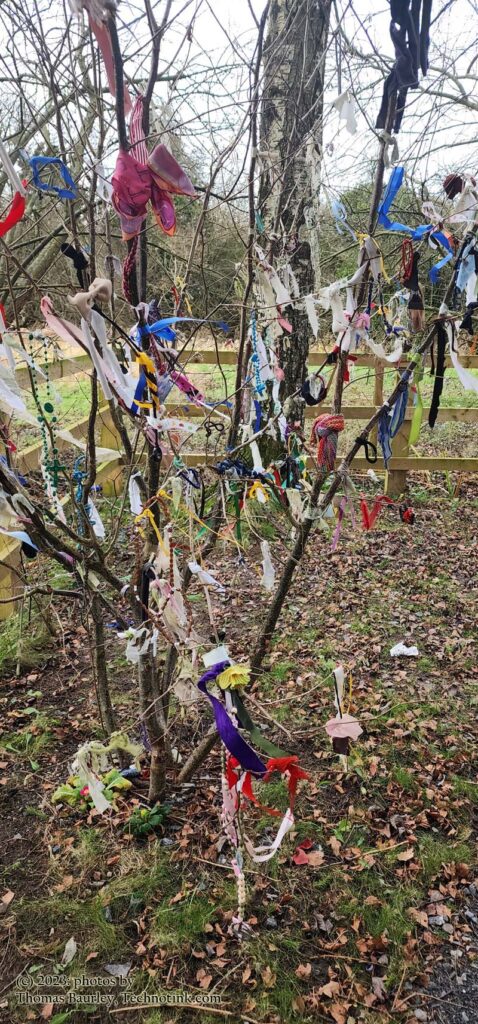
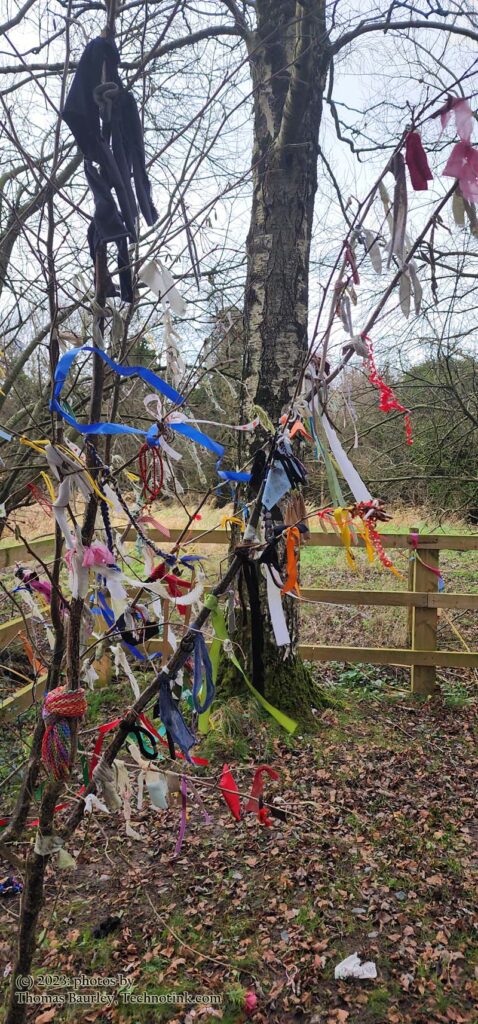
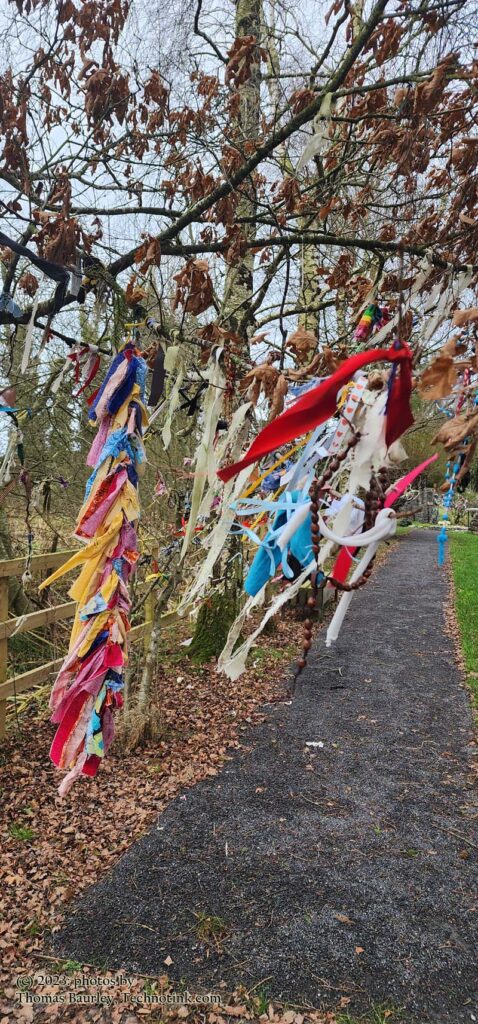
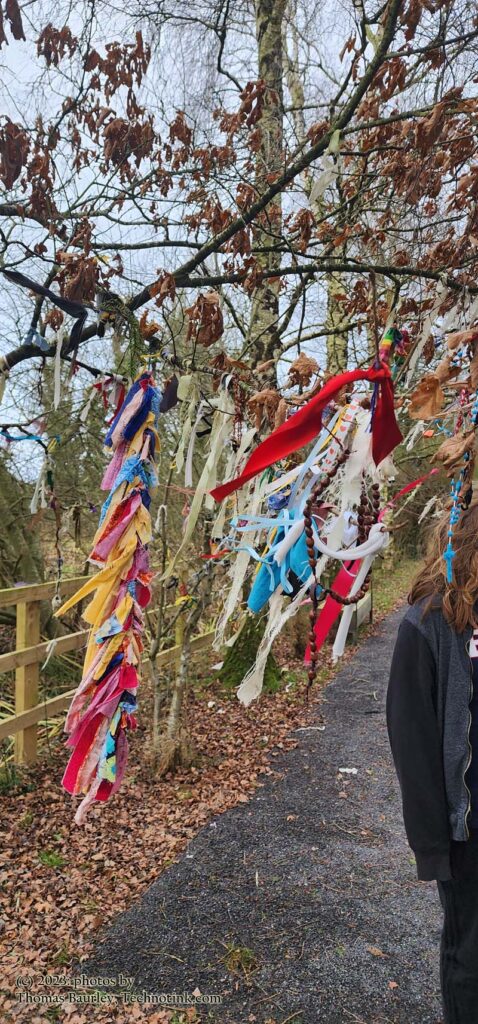
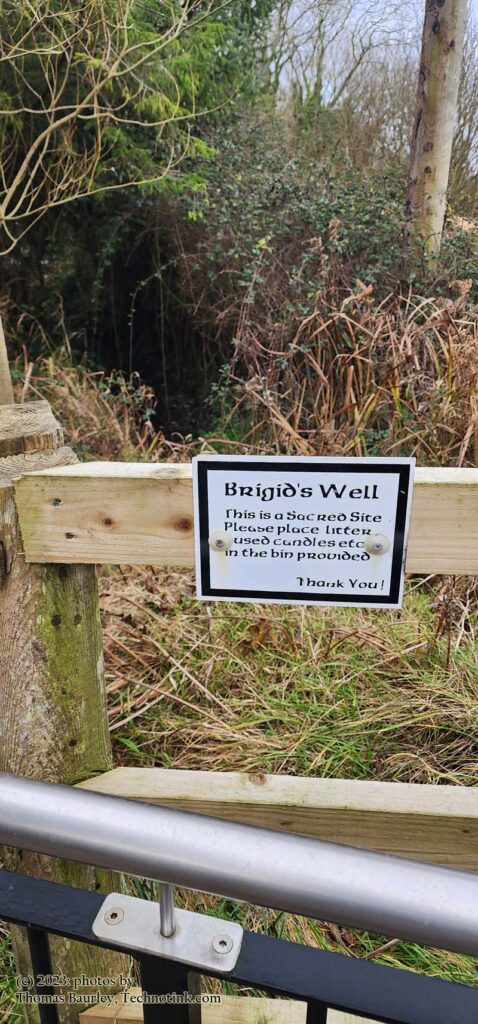
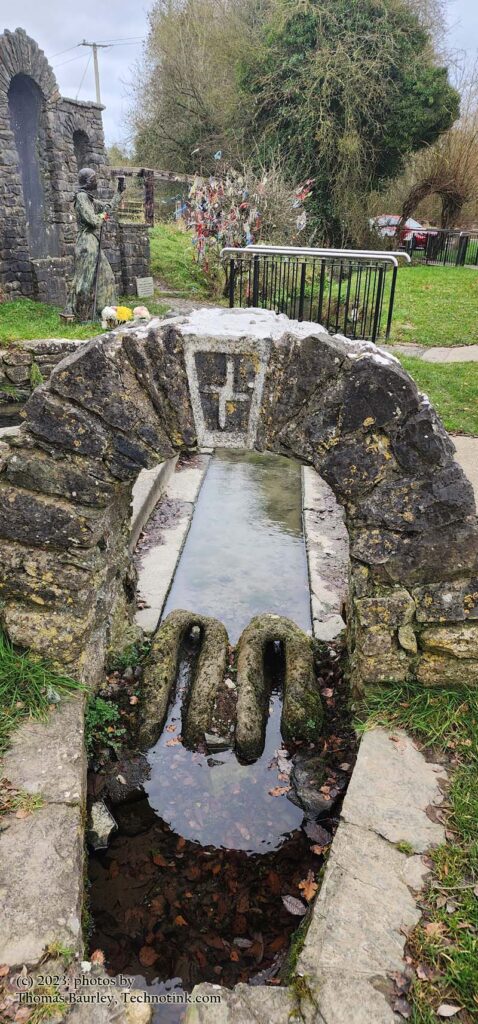
2010 visit:
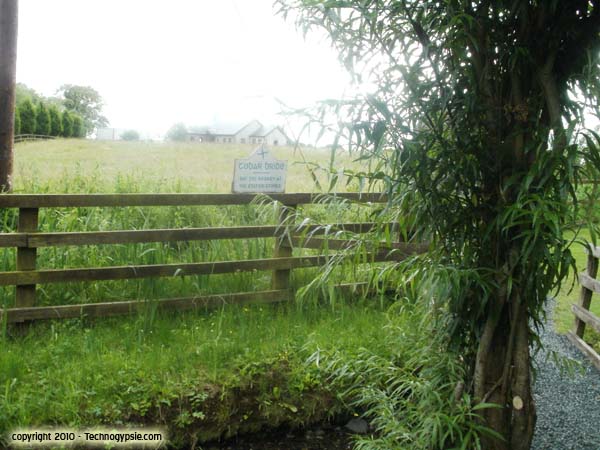
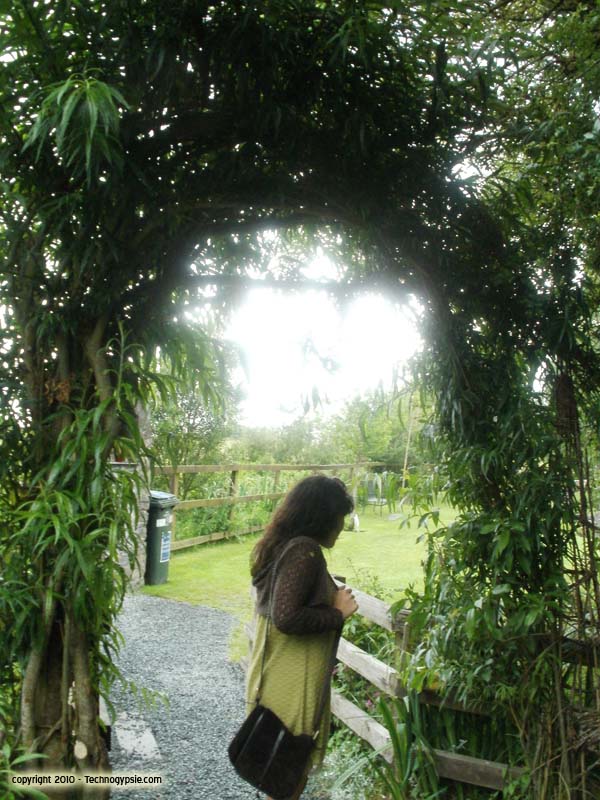
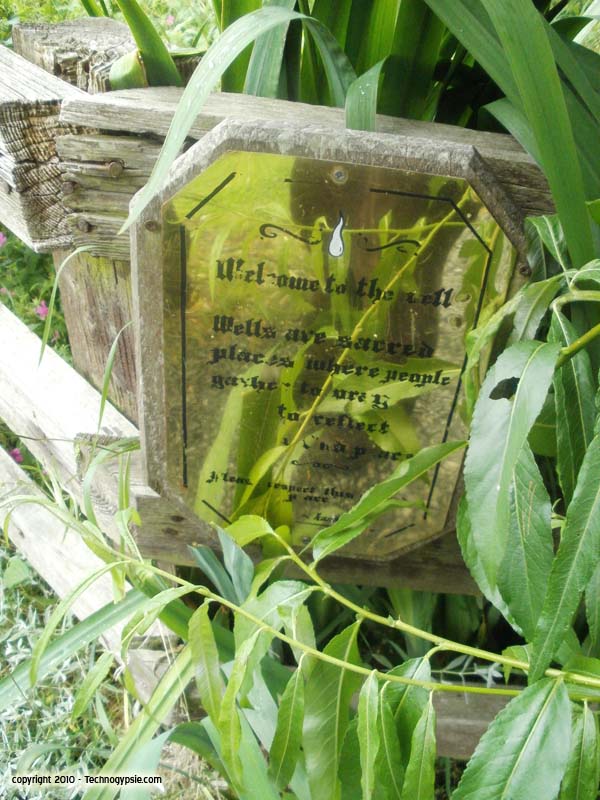
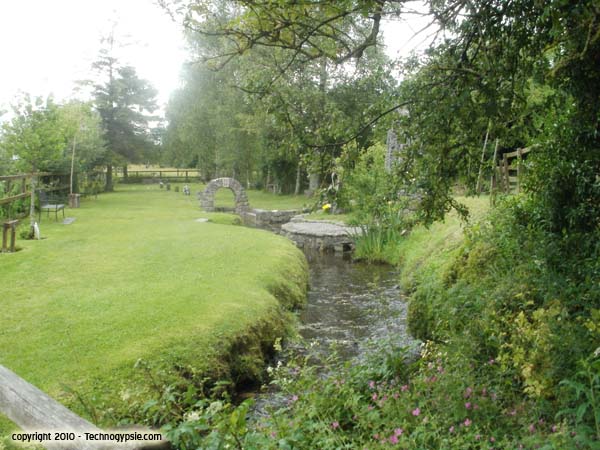
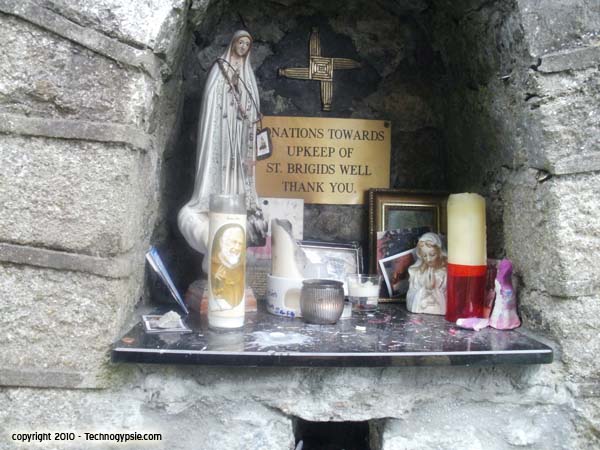
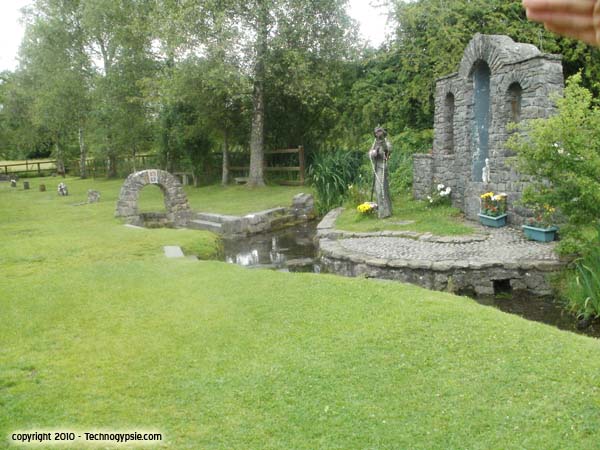
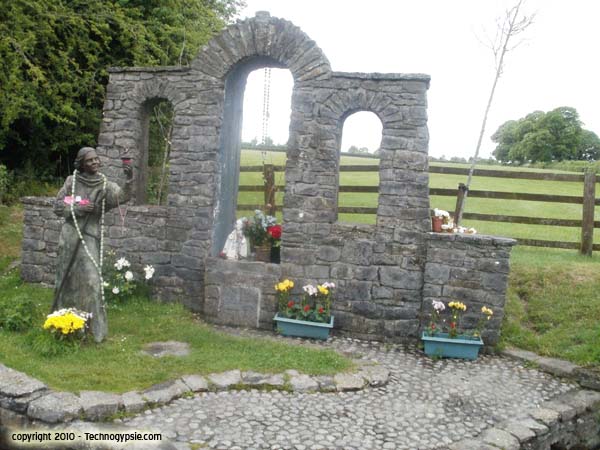
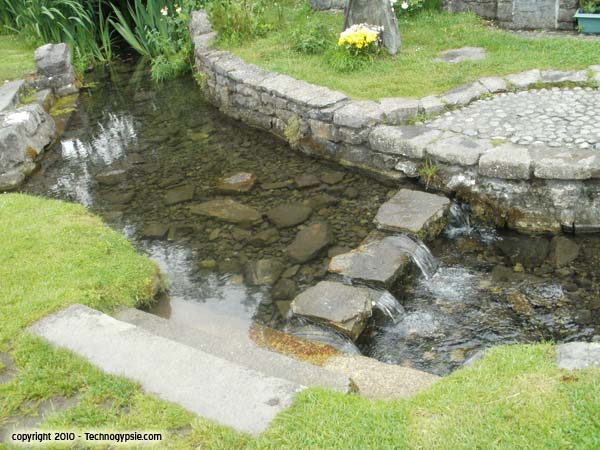
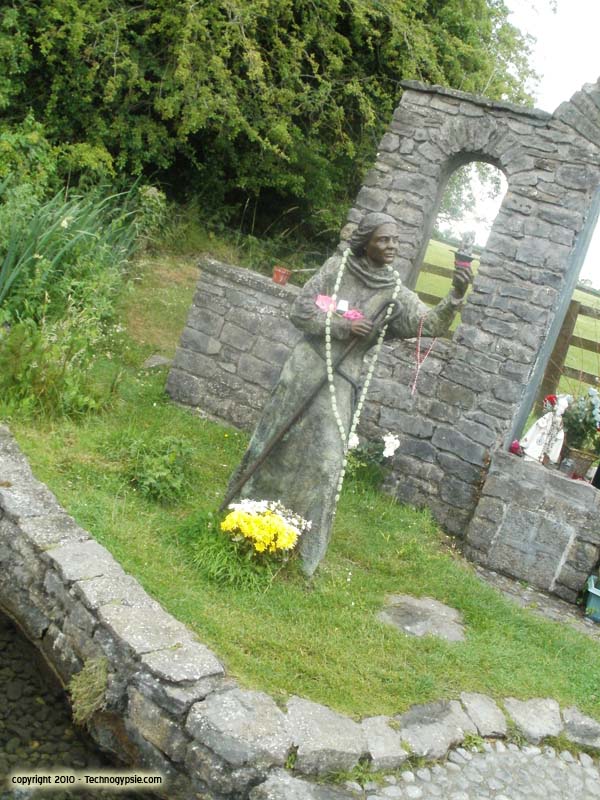
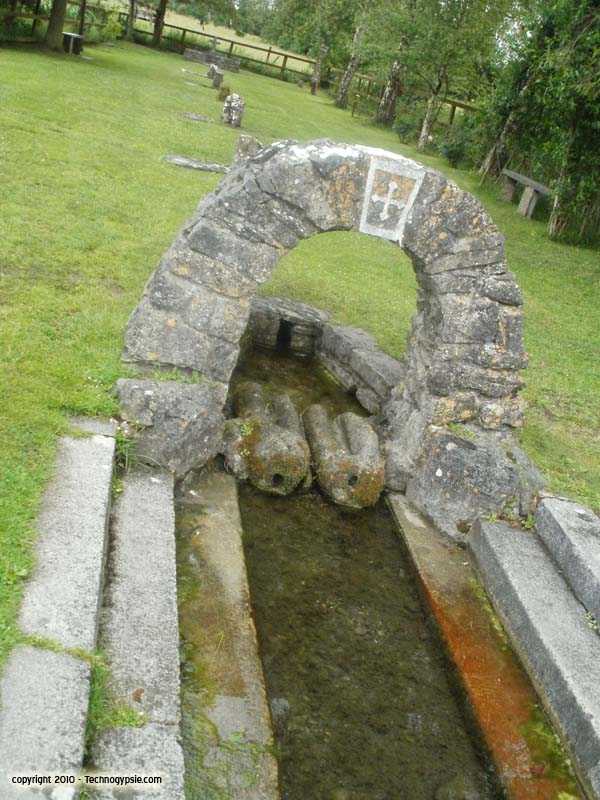
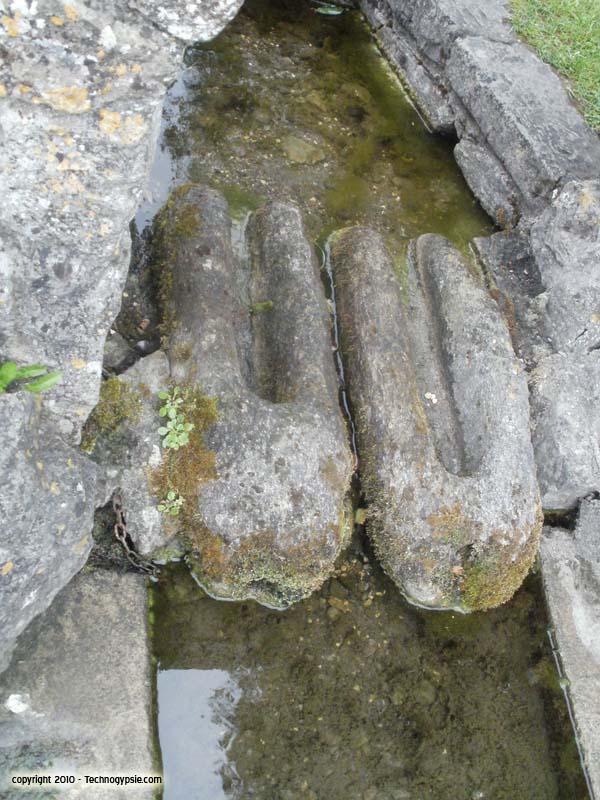
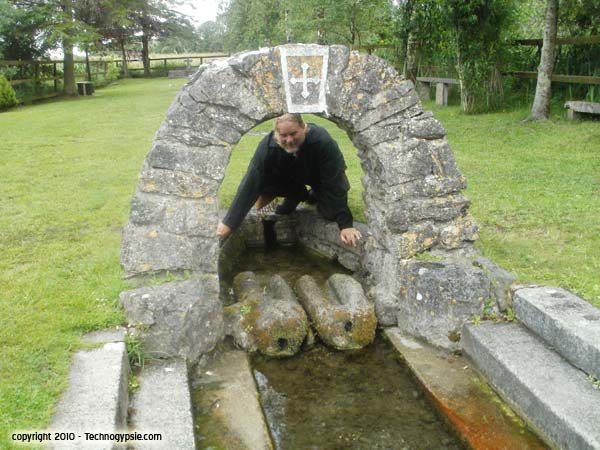
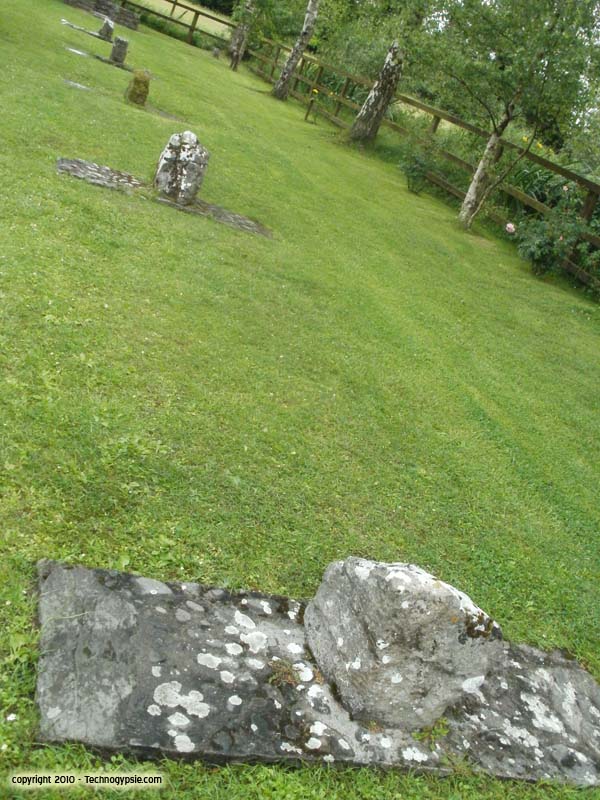
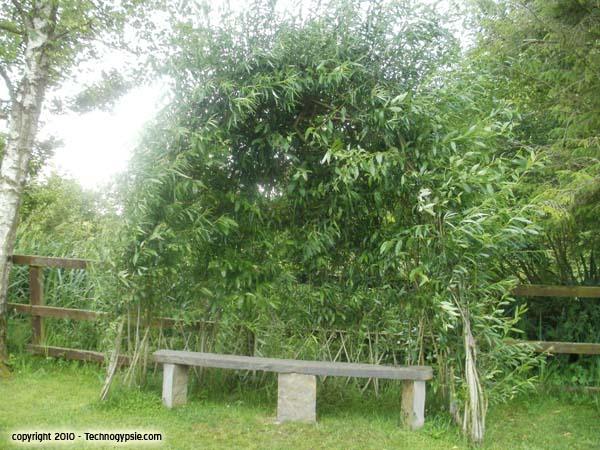
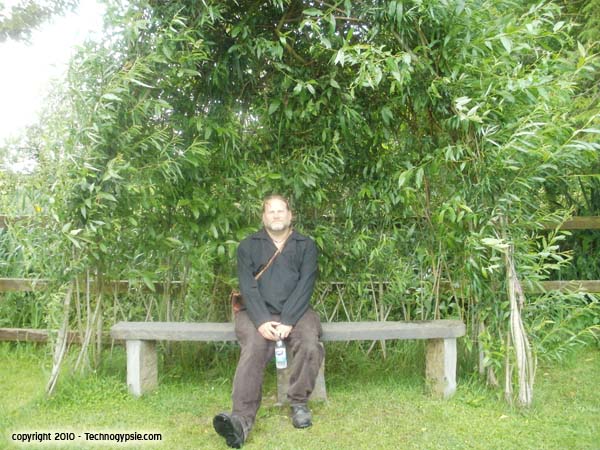
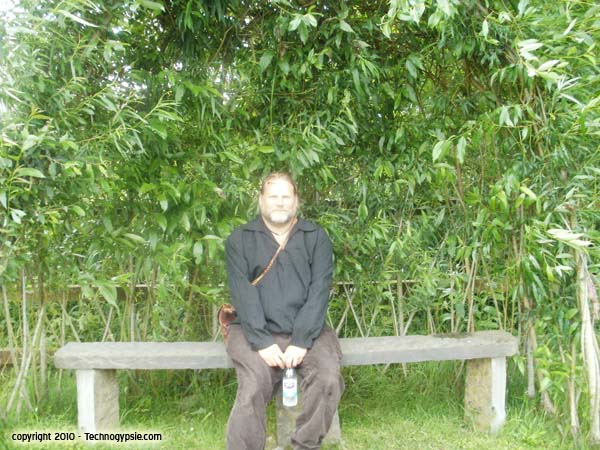
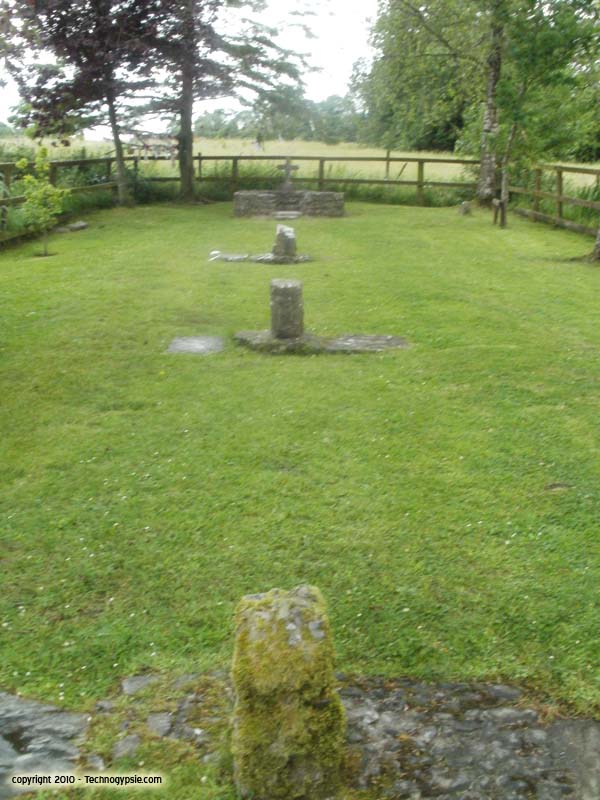
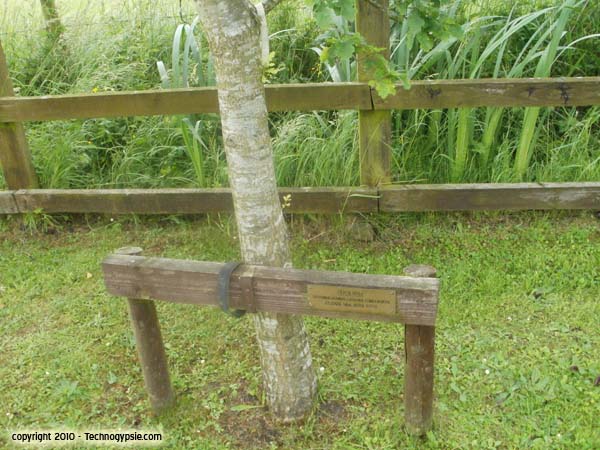
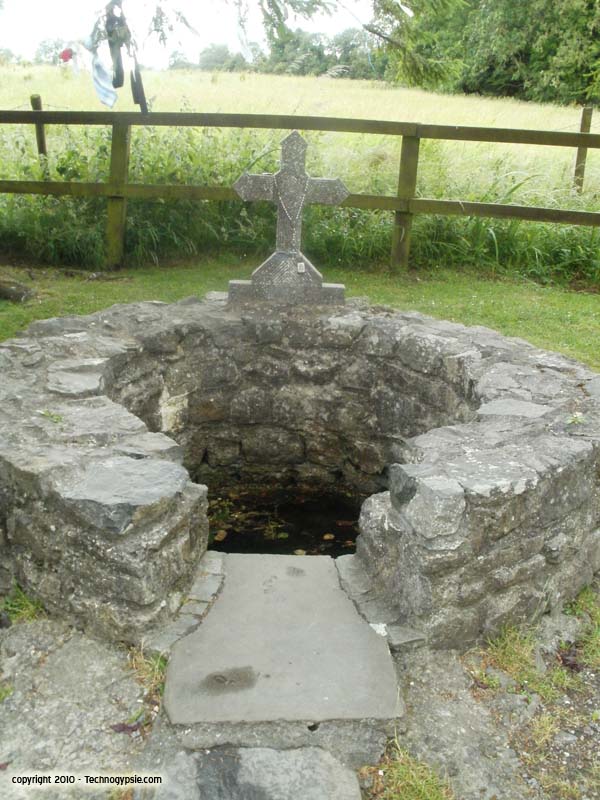
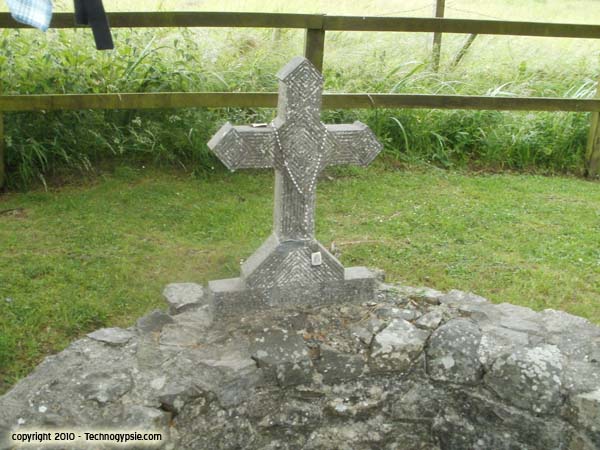
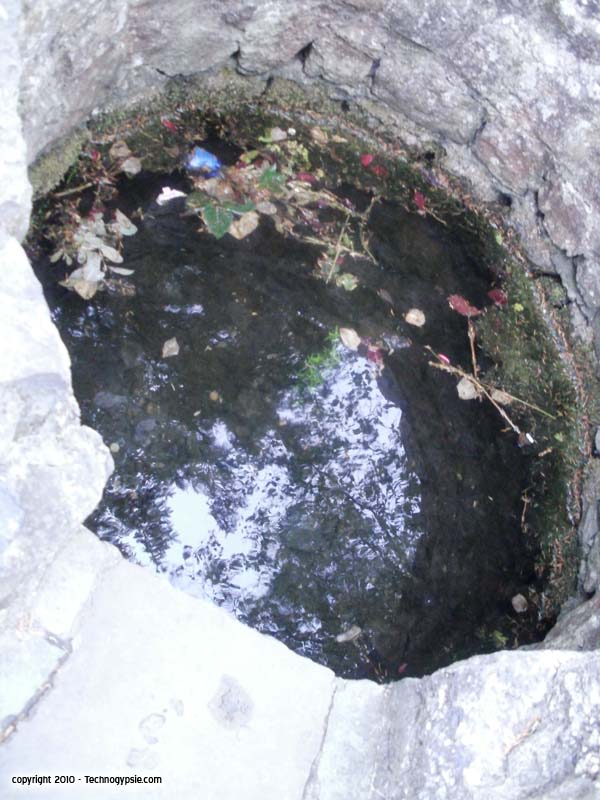
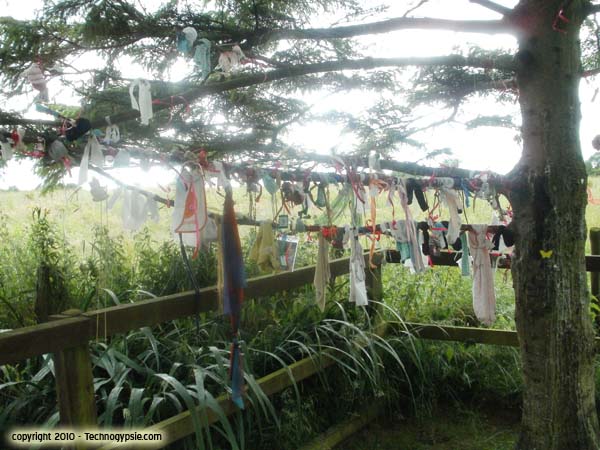
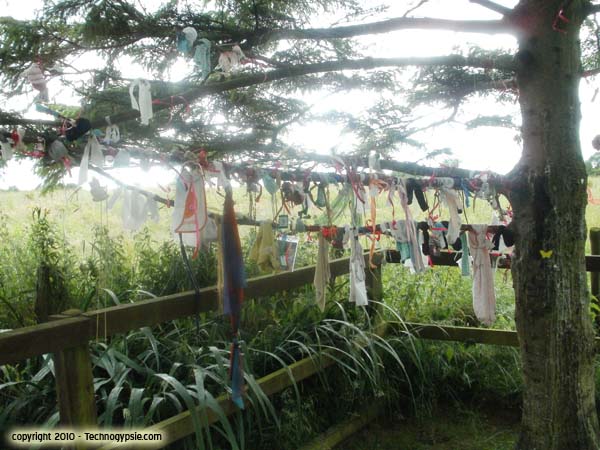
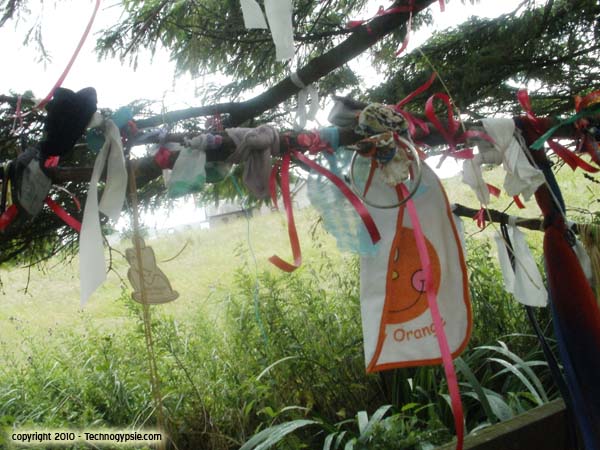
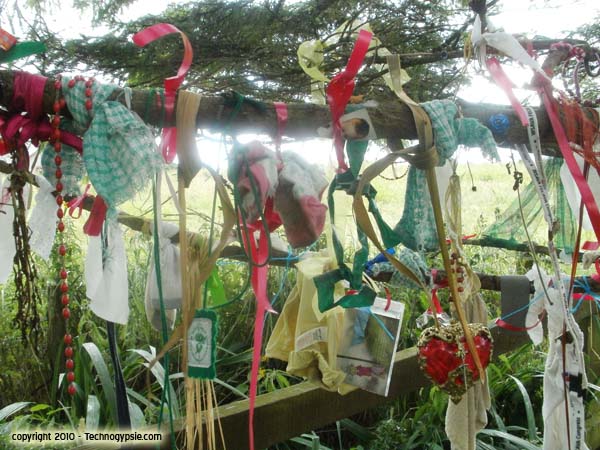
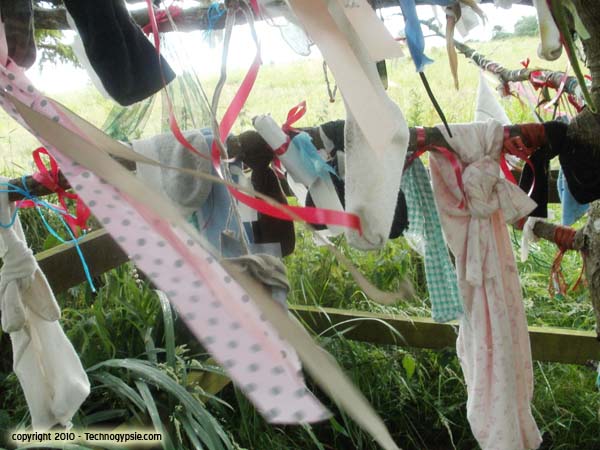
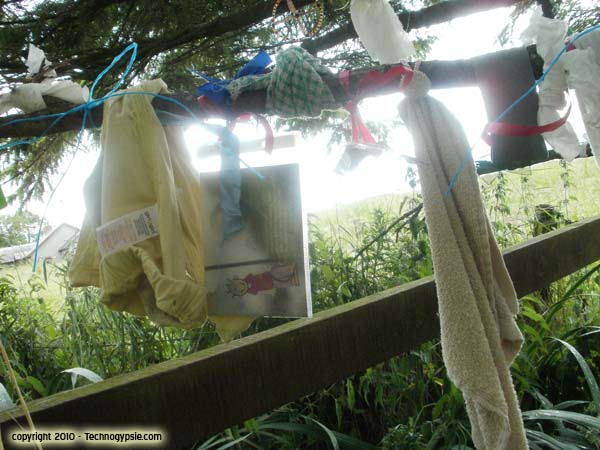
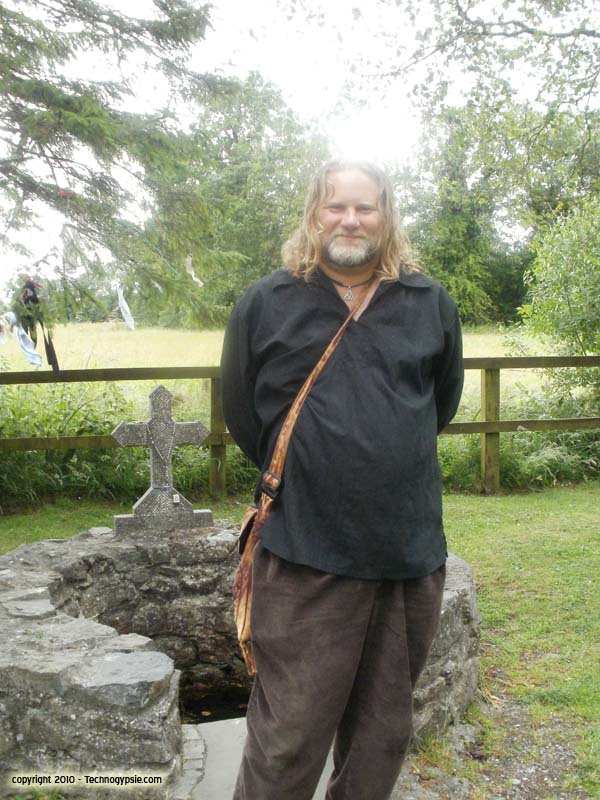
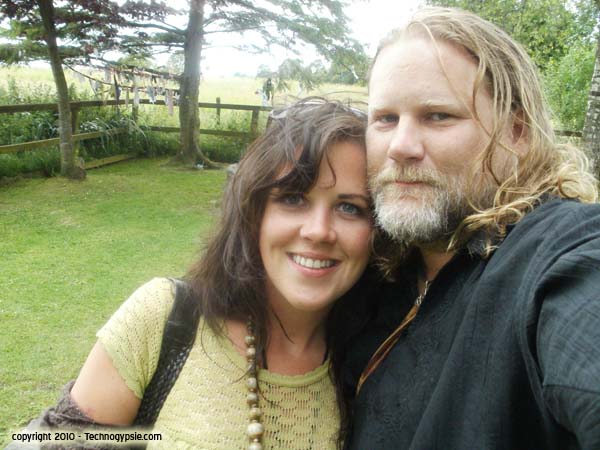
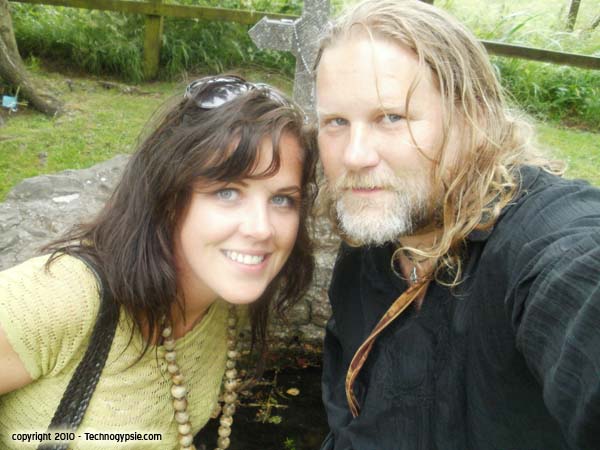
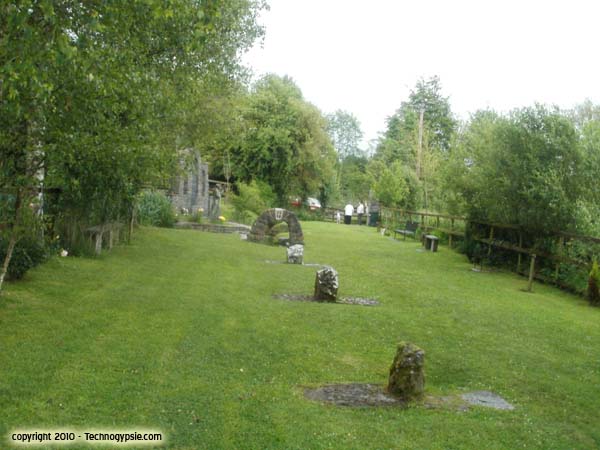
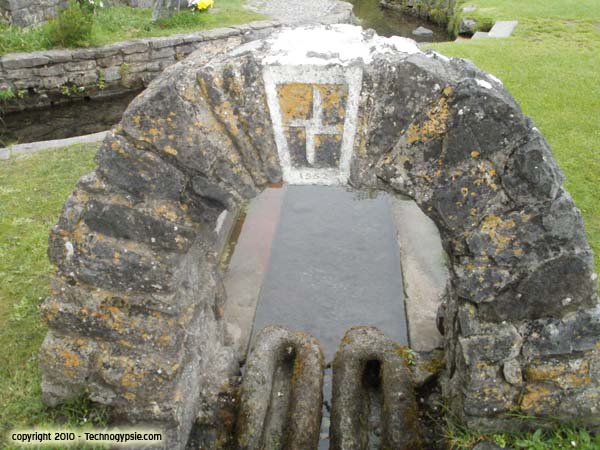
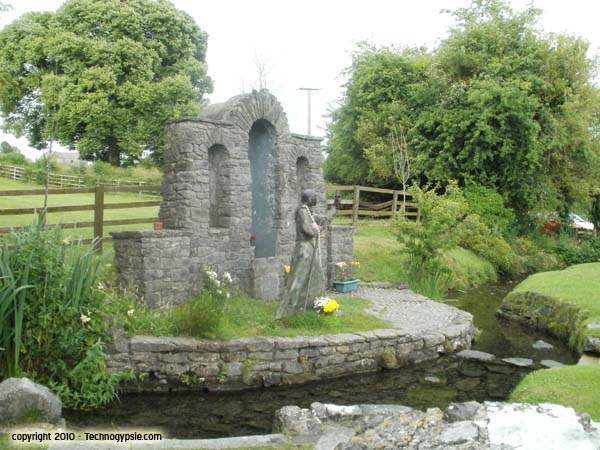
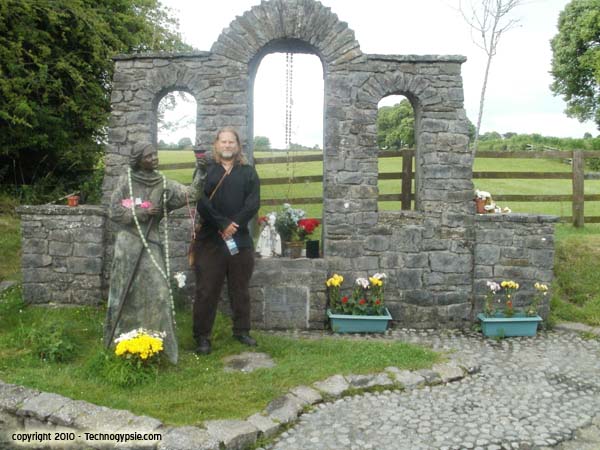
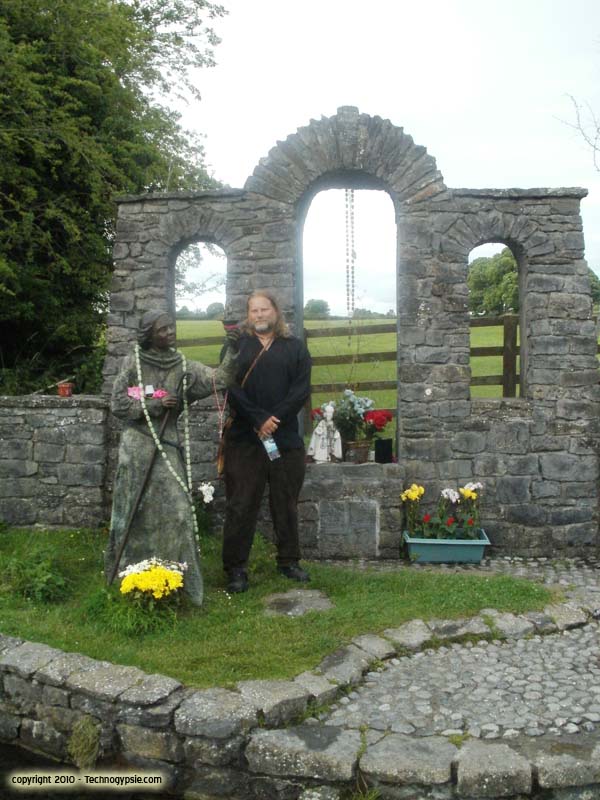
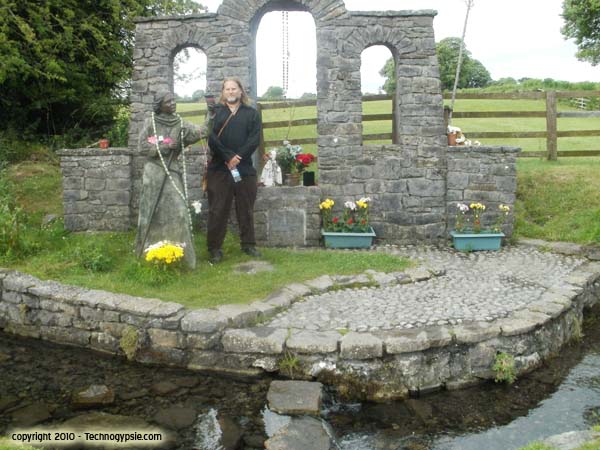
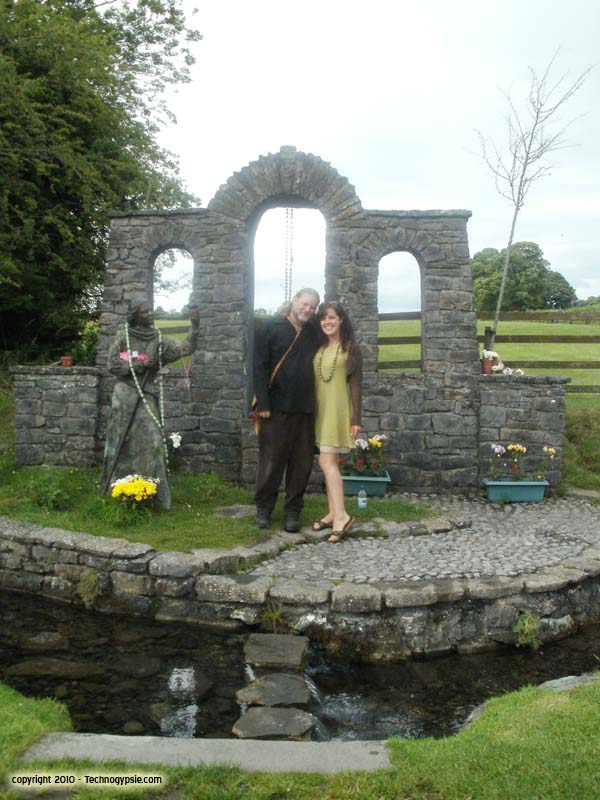

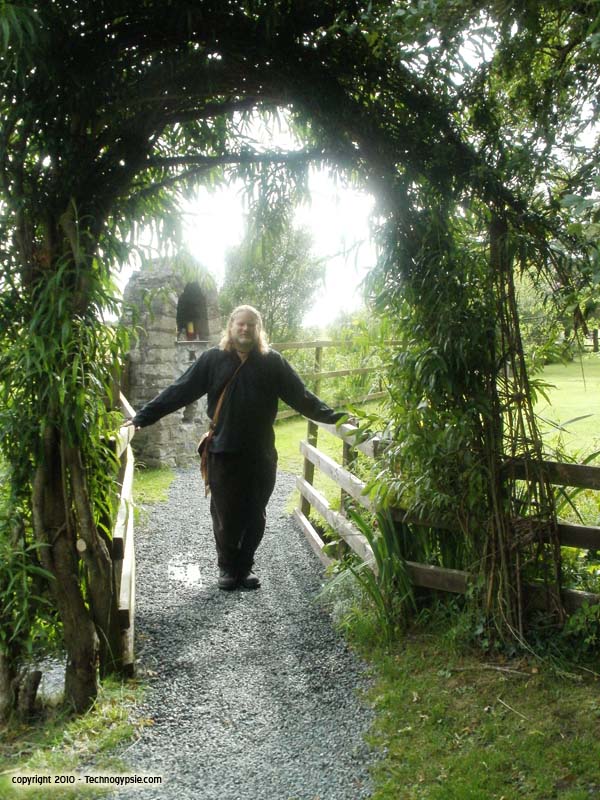
Discover more from The Naiads Well
Subscribe to get the latest posts sent to your email.
